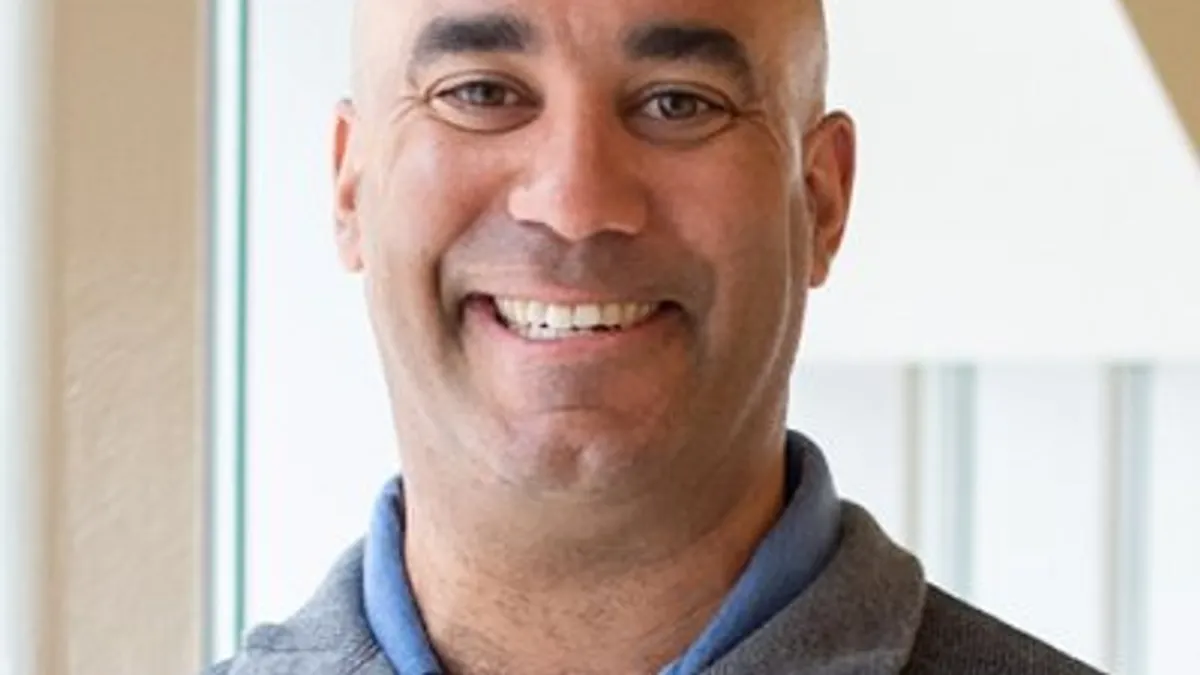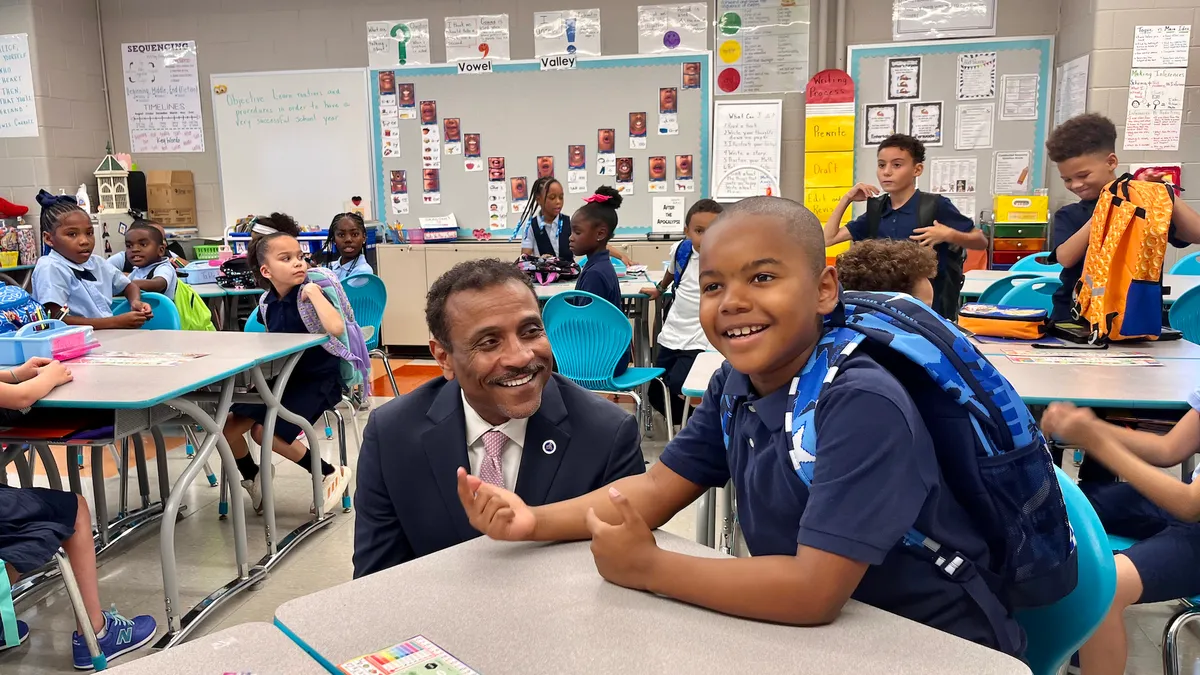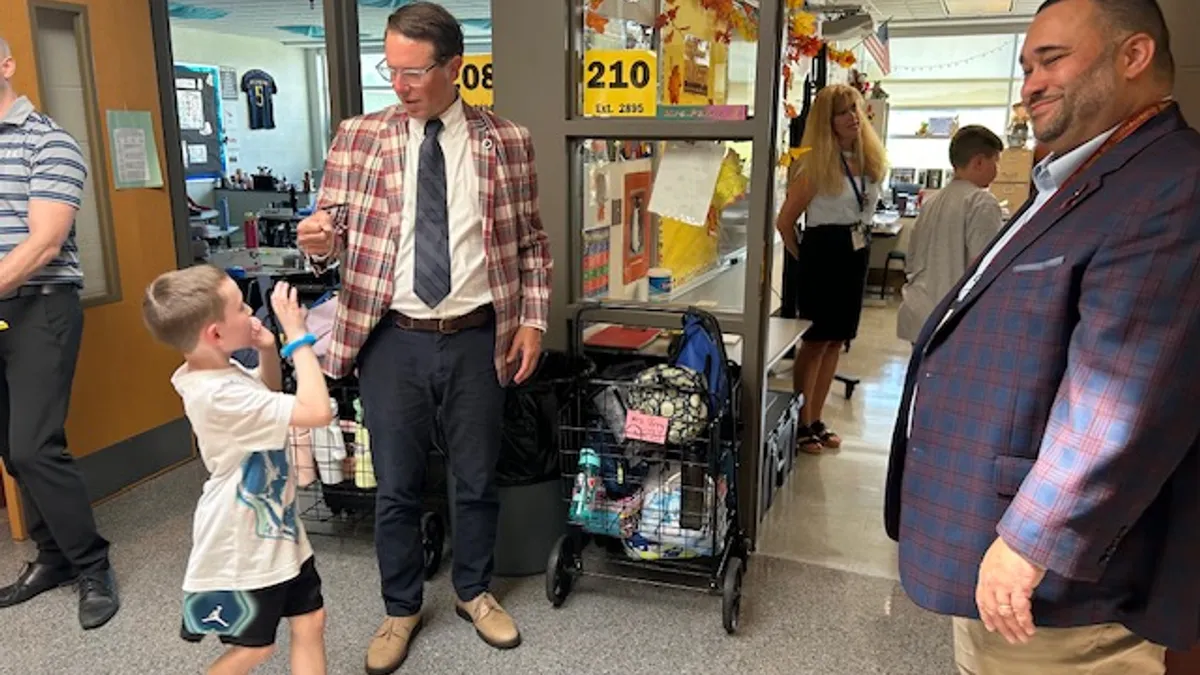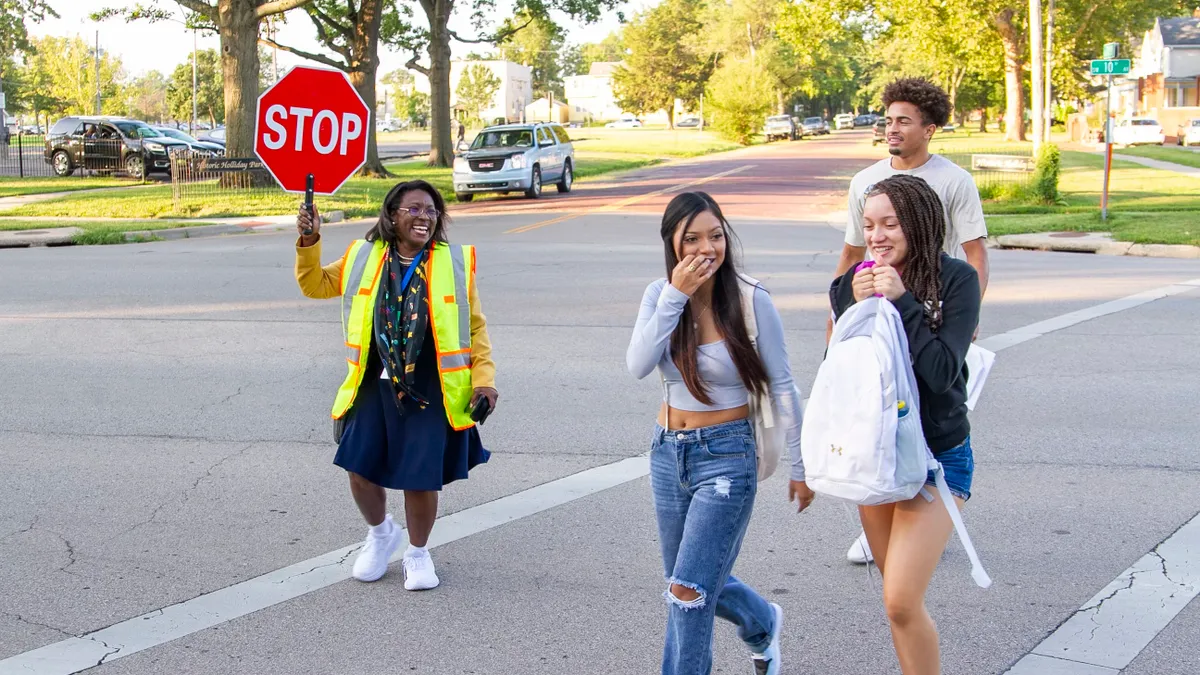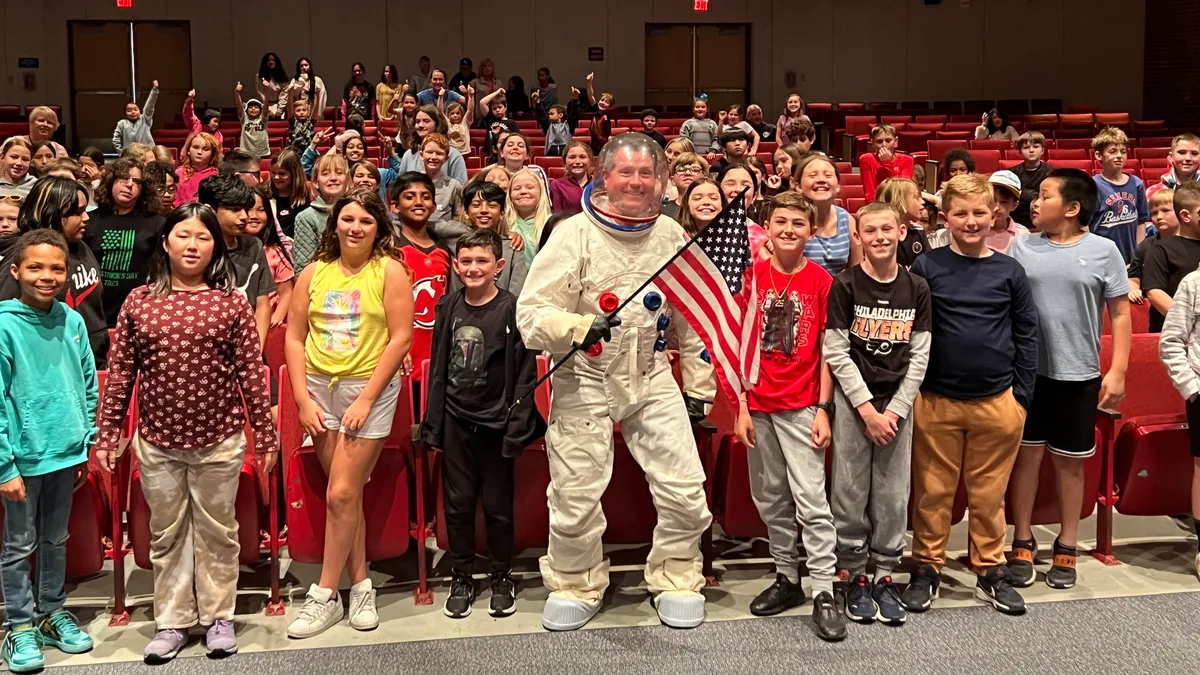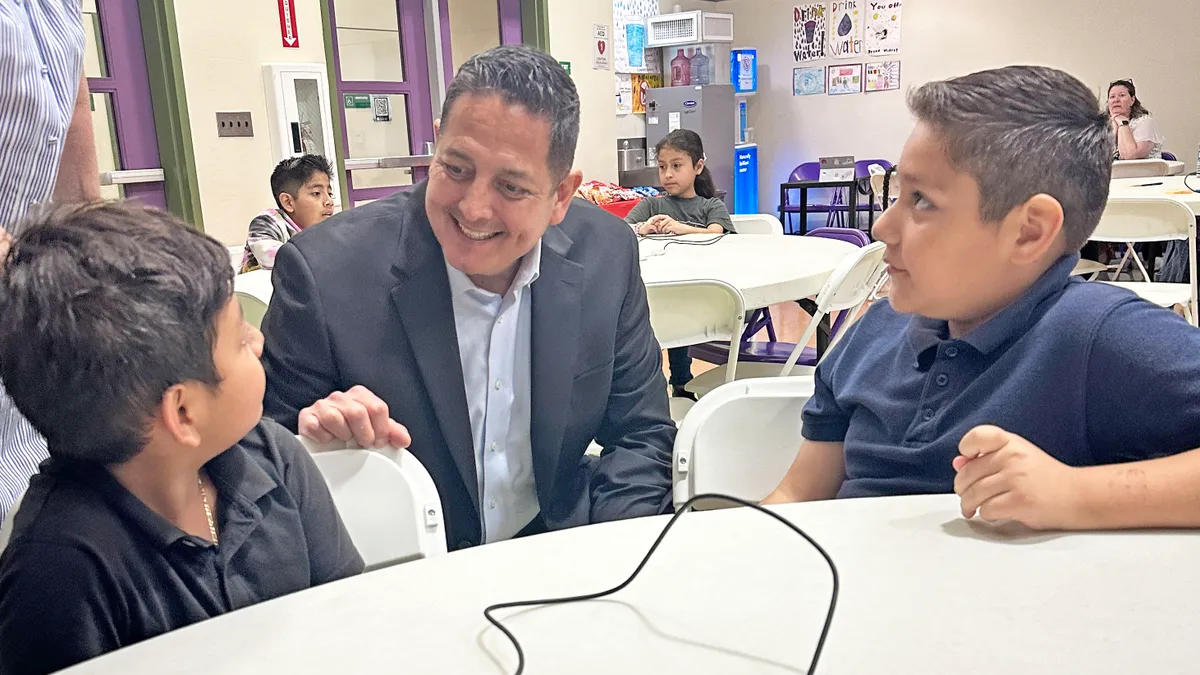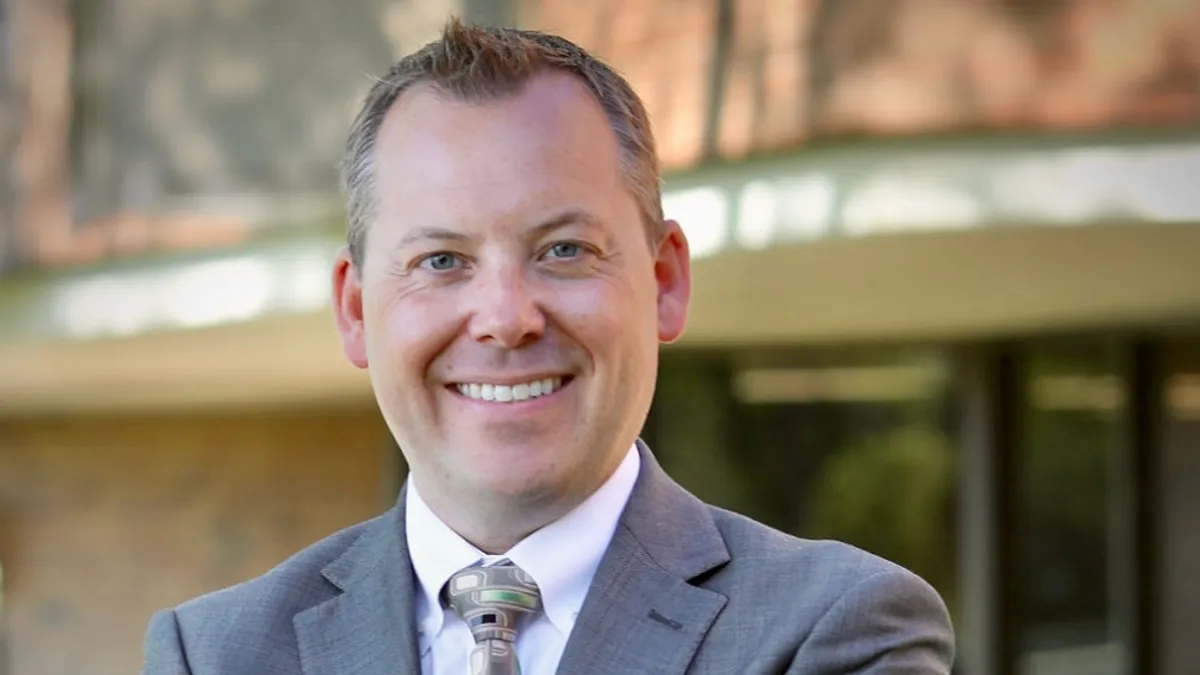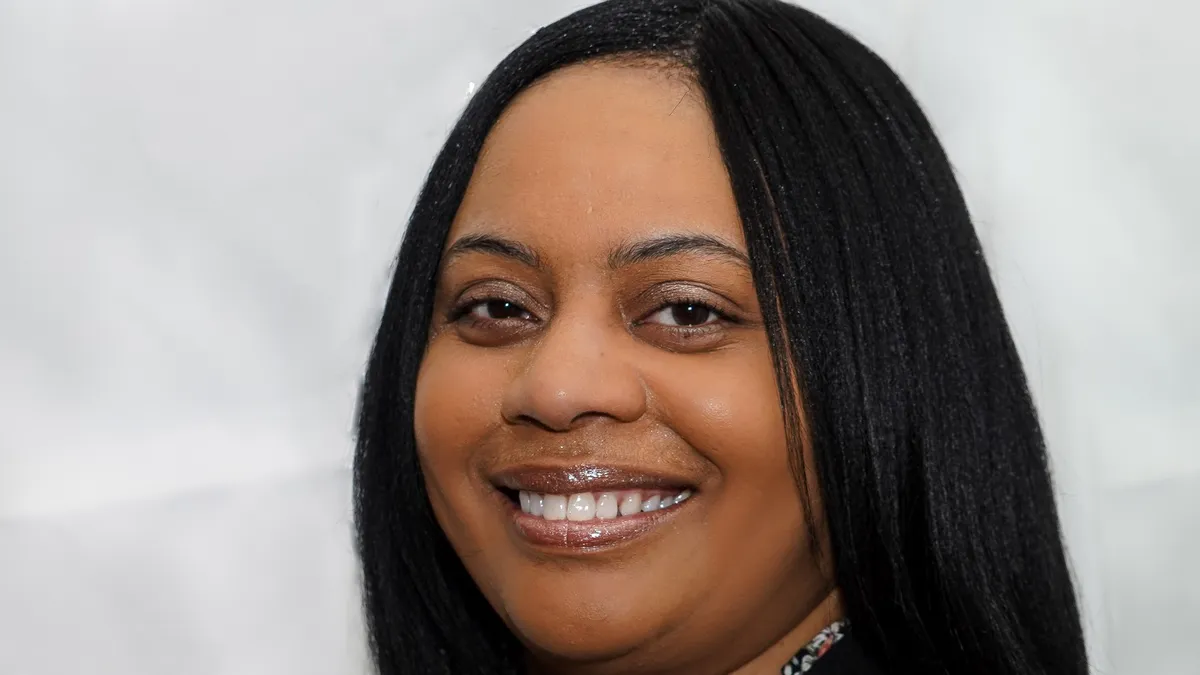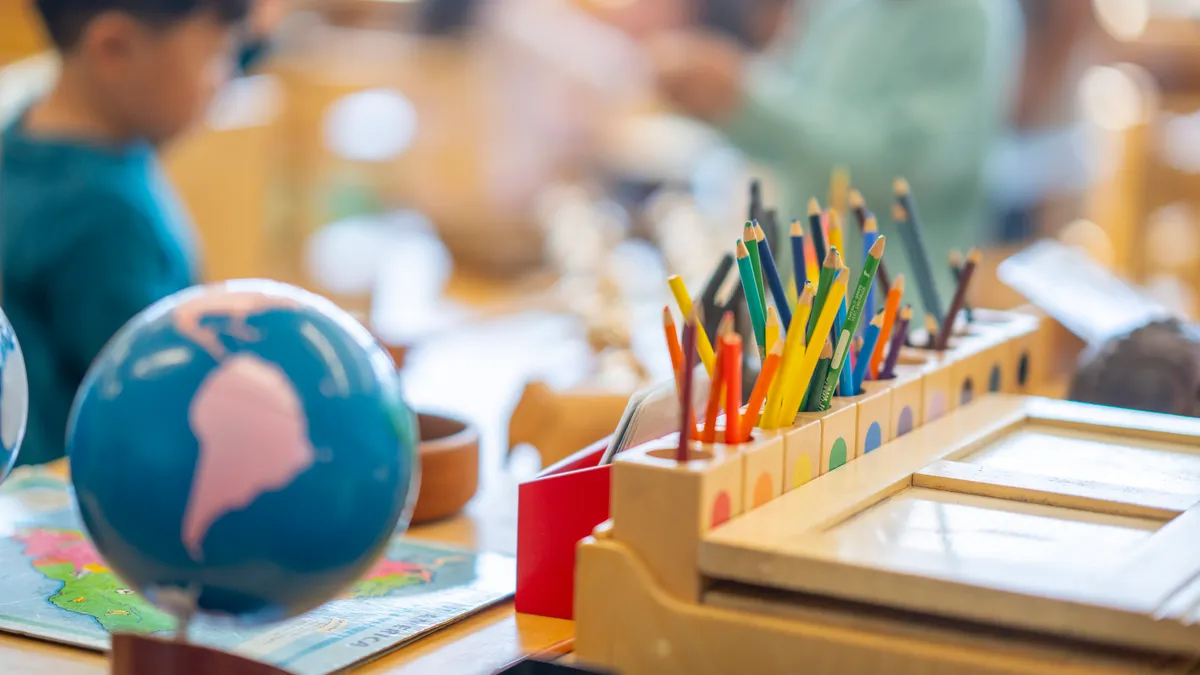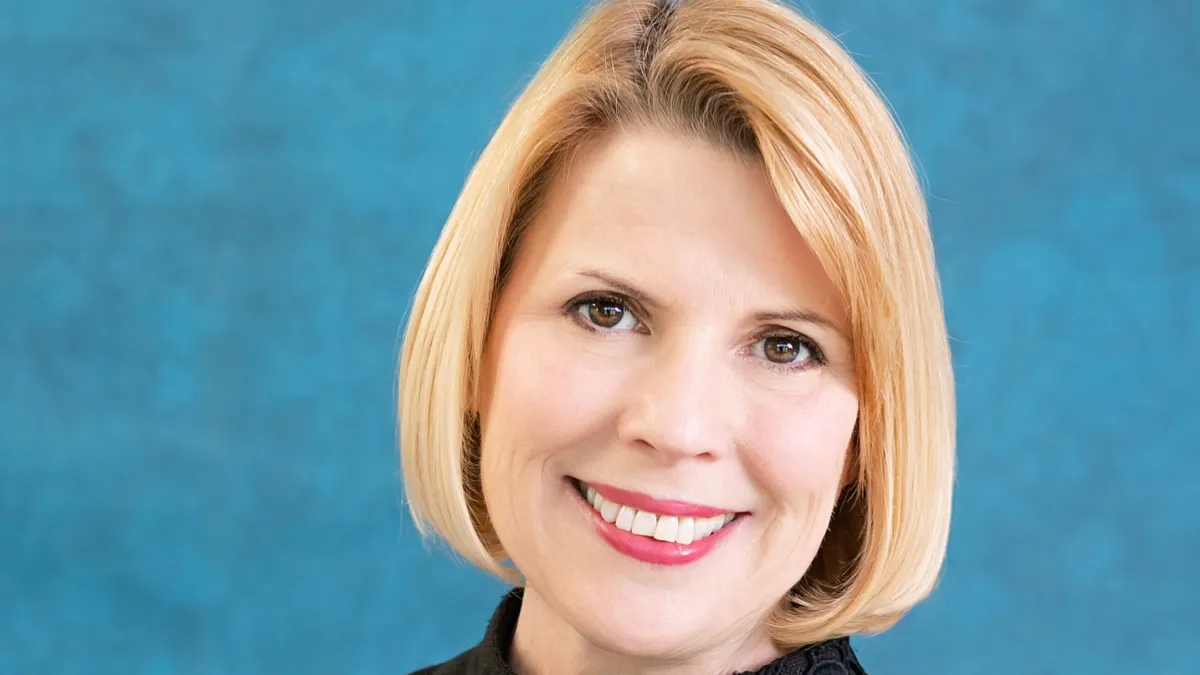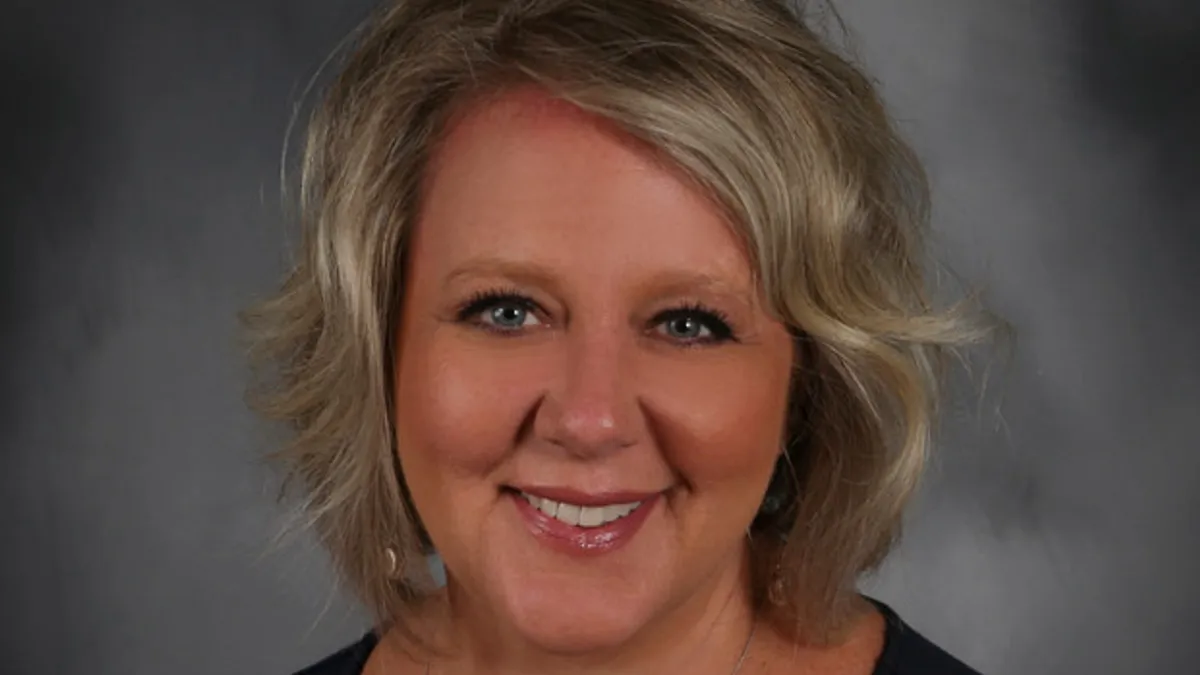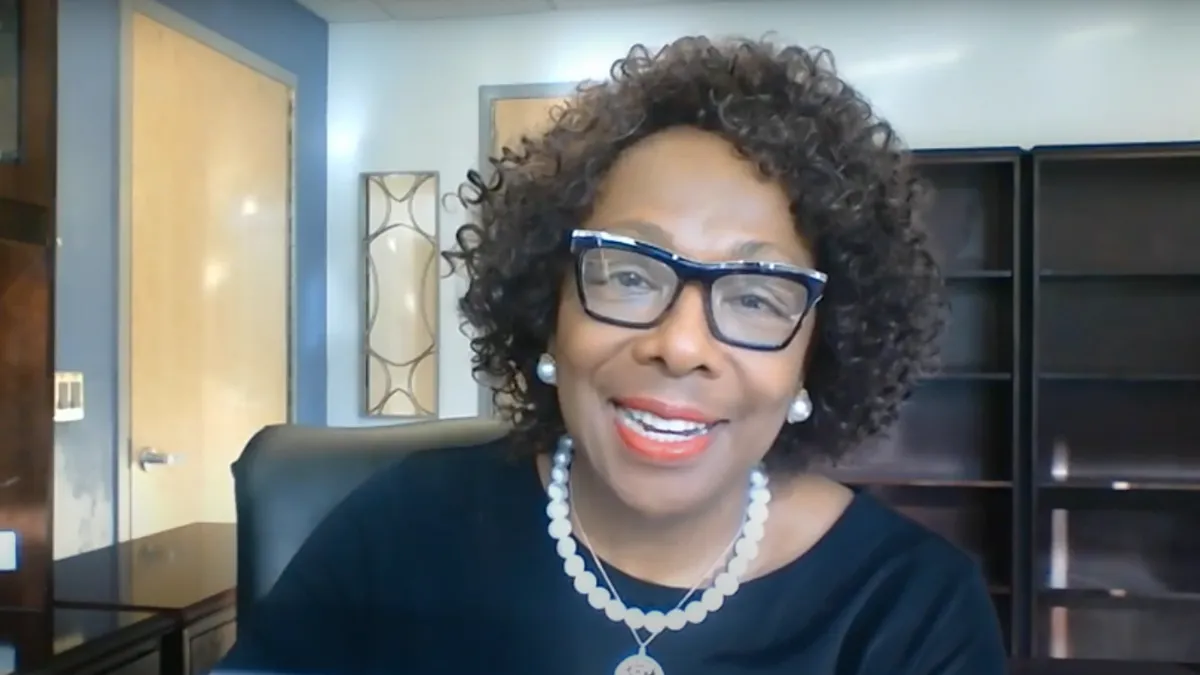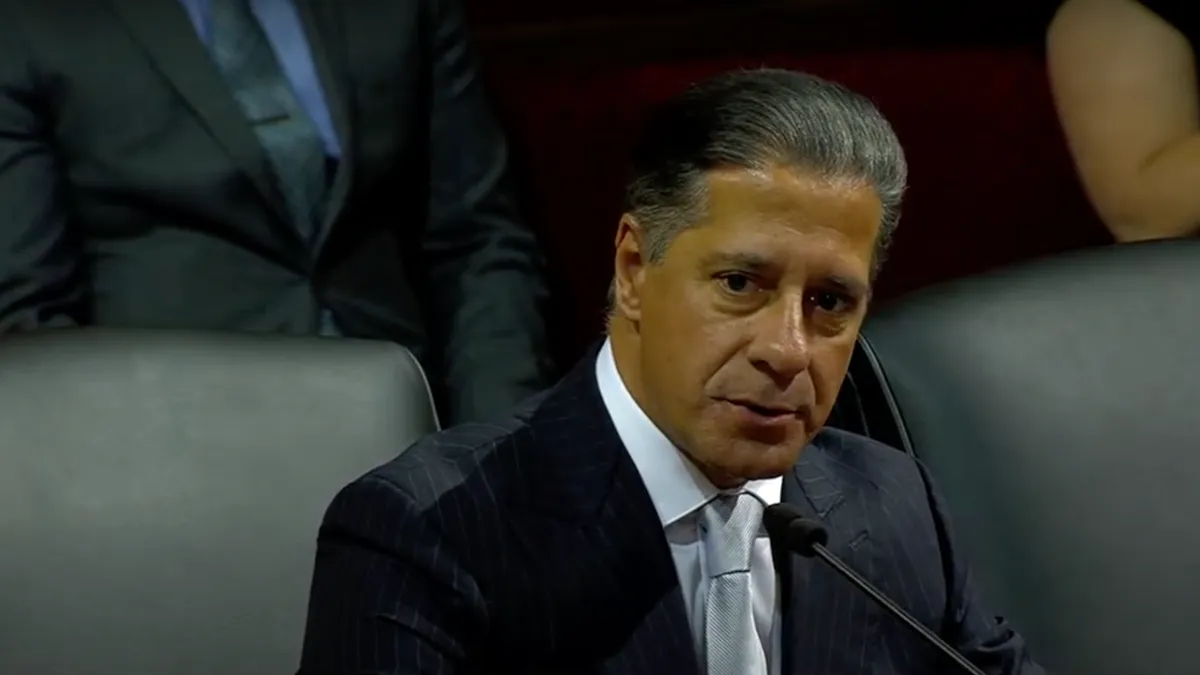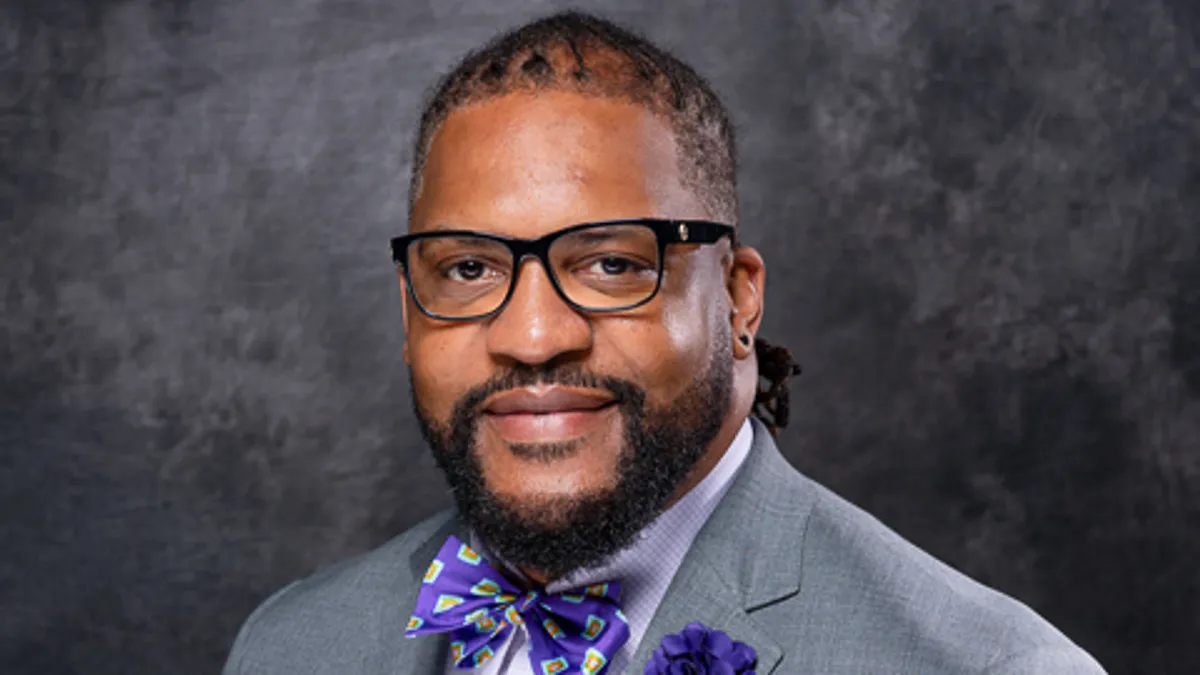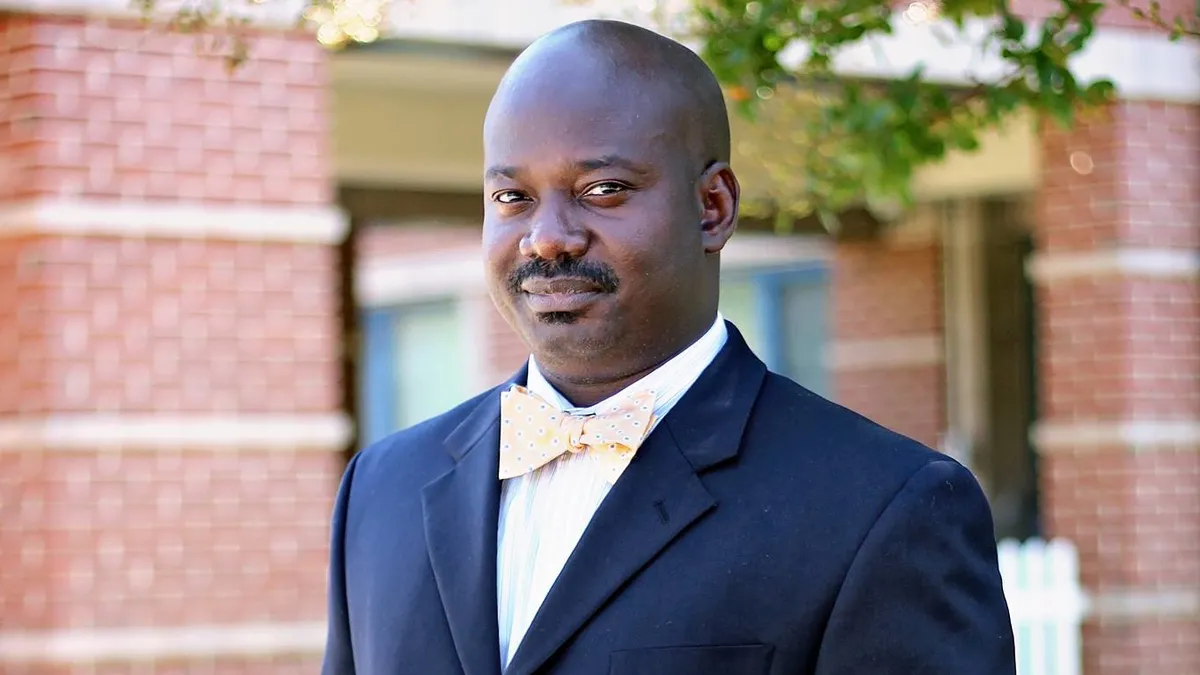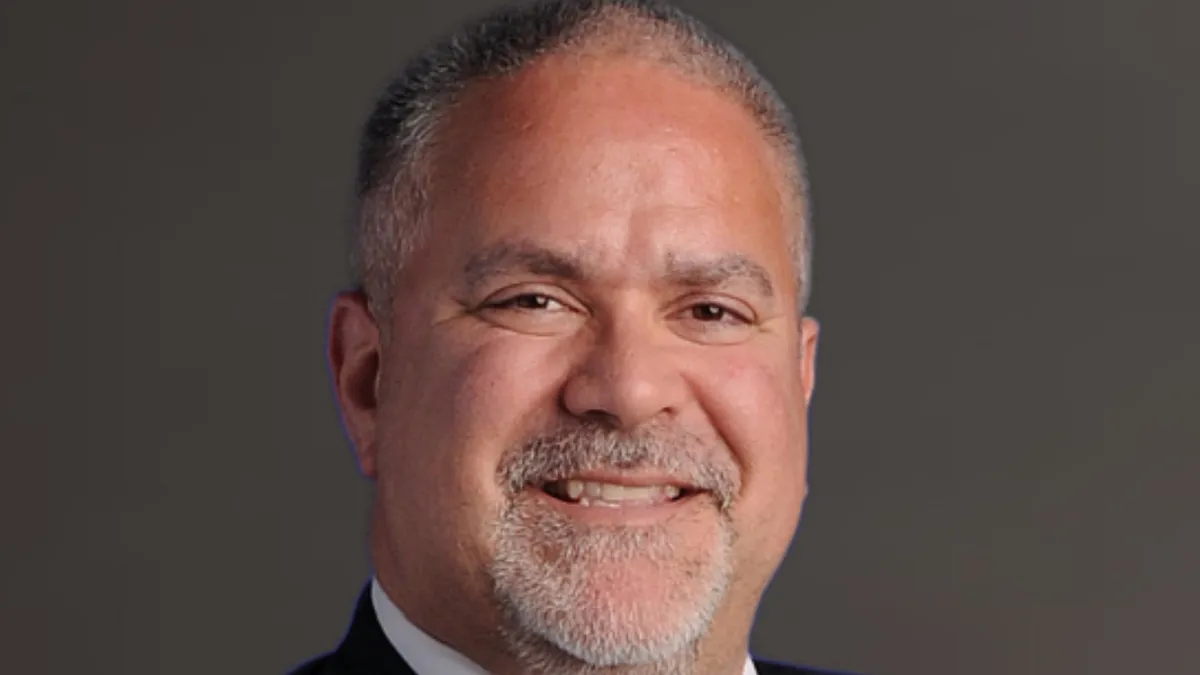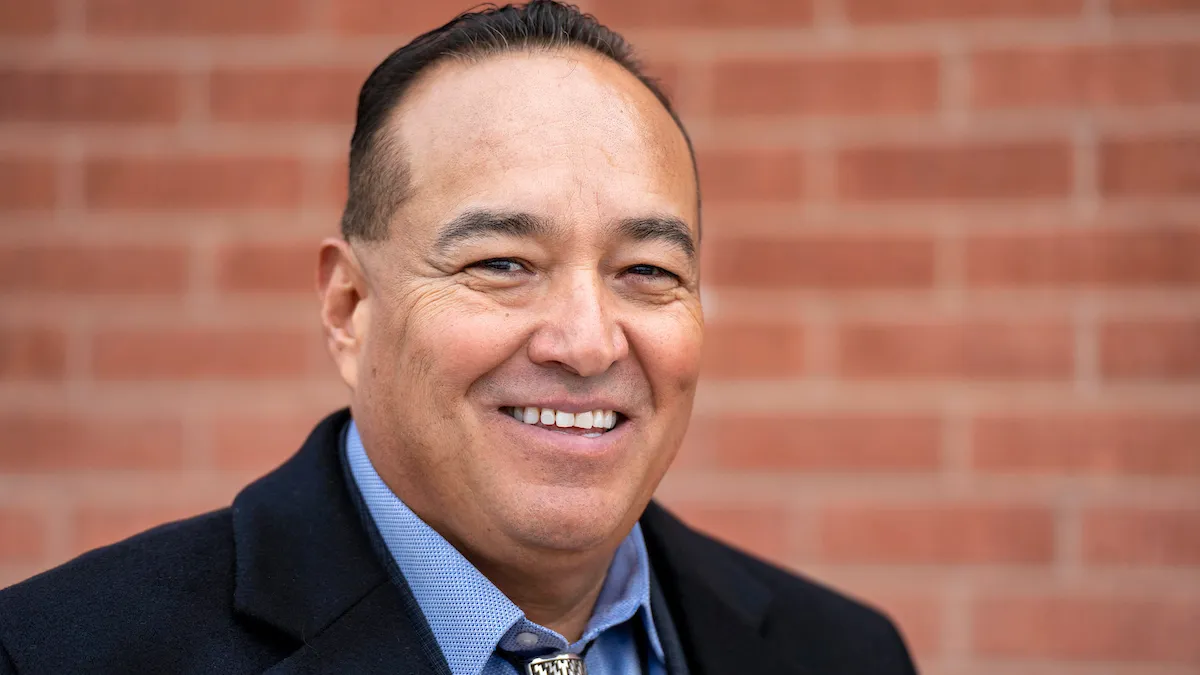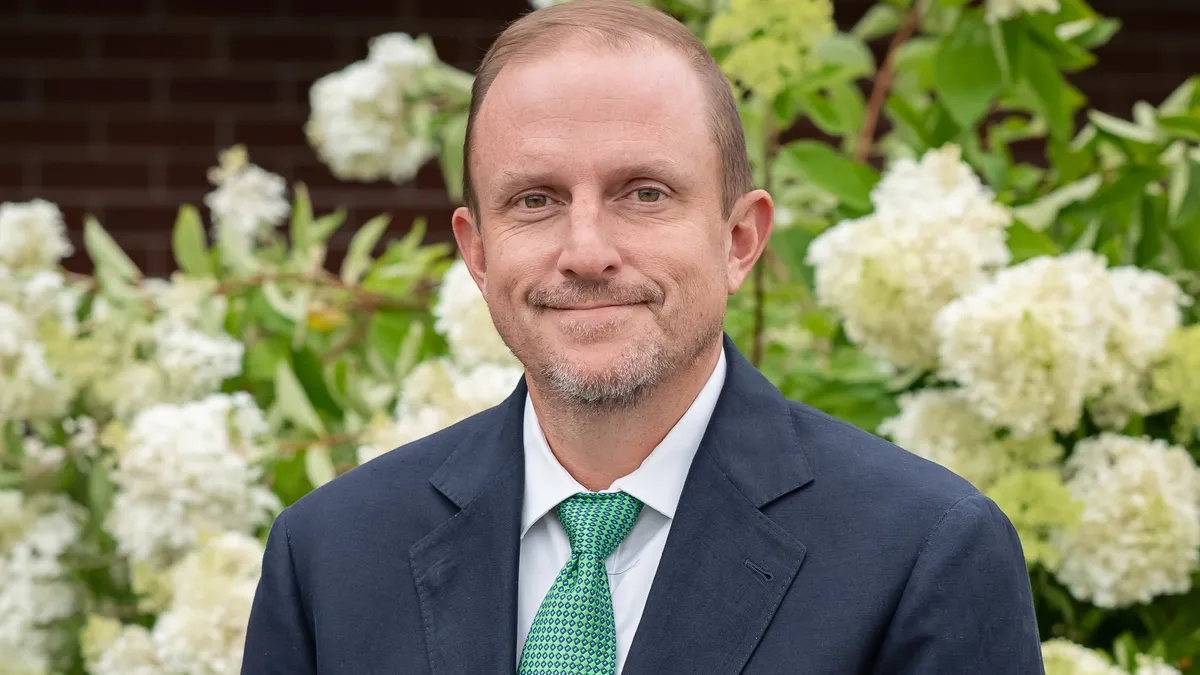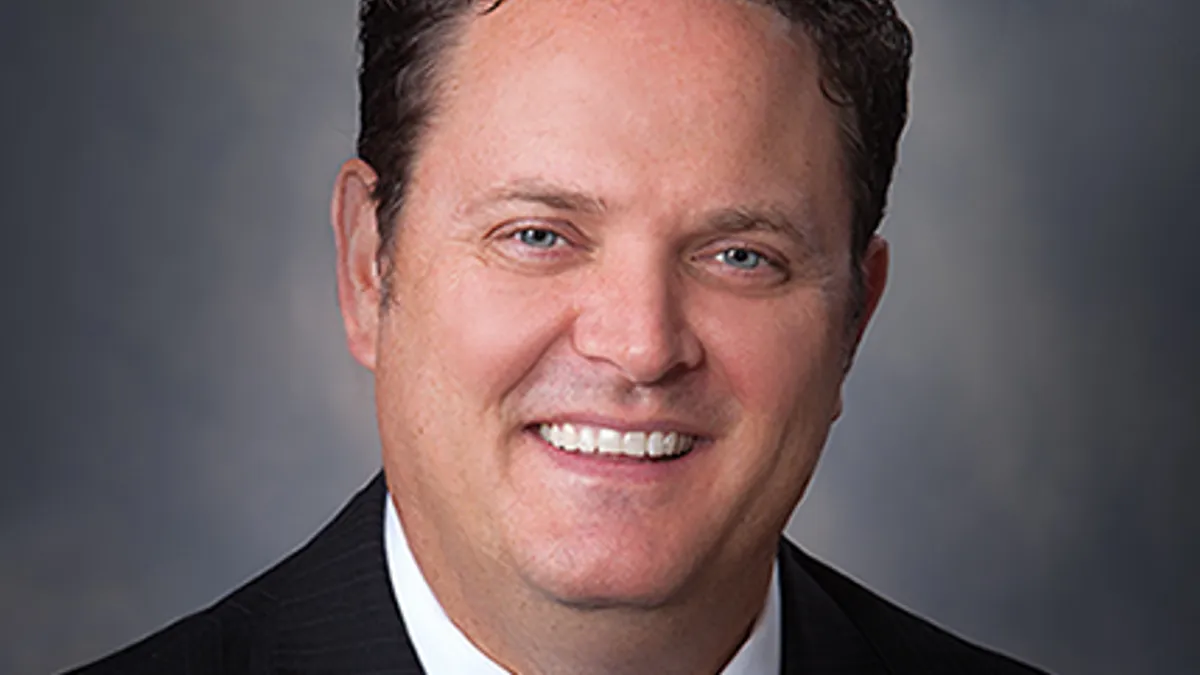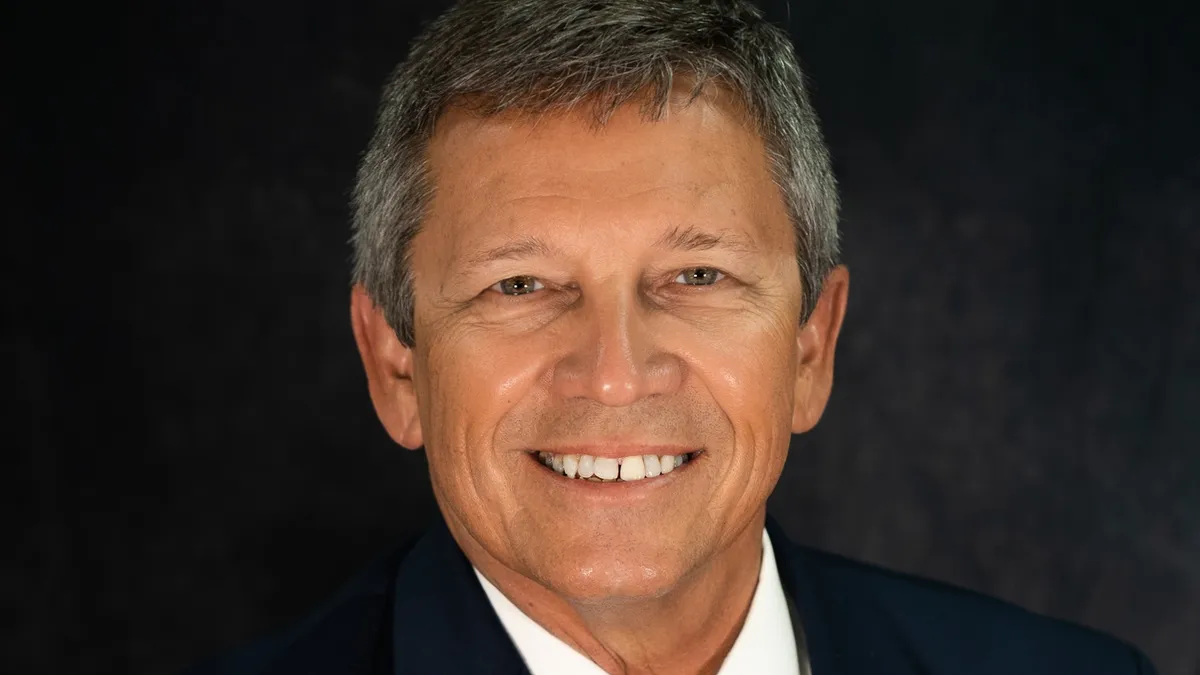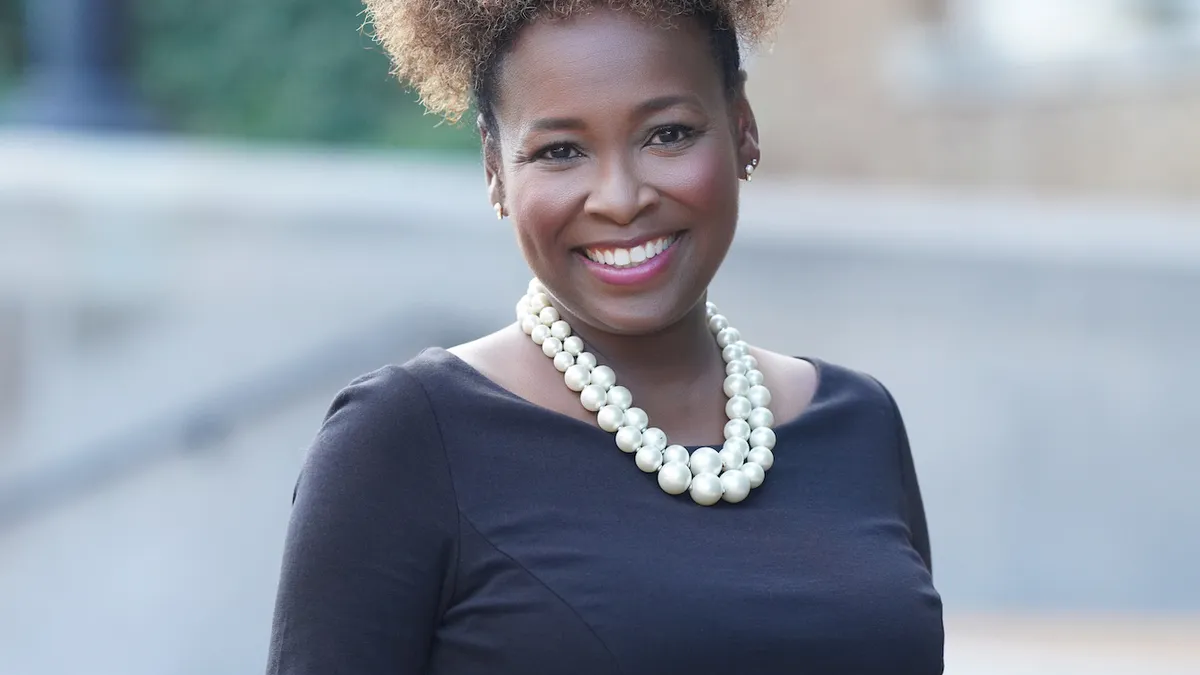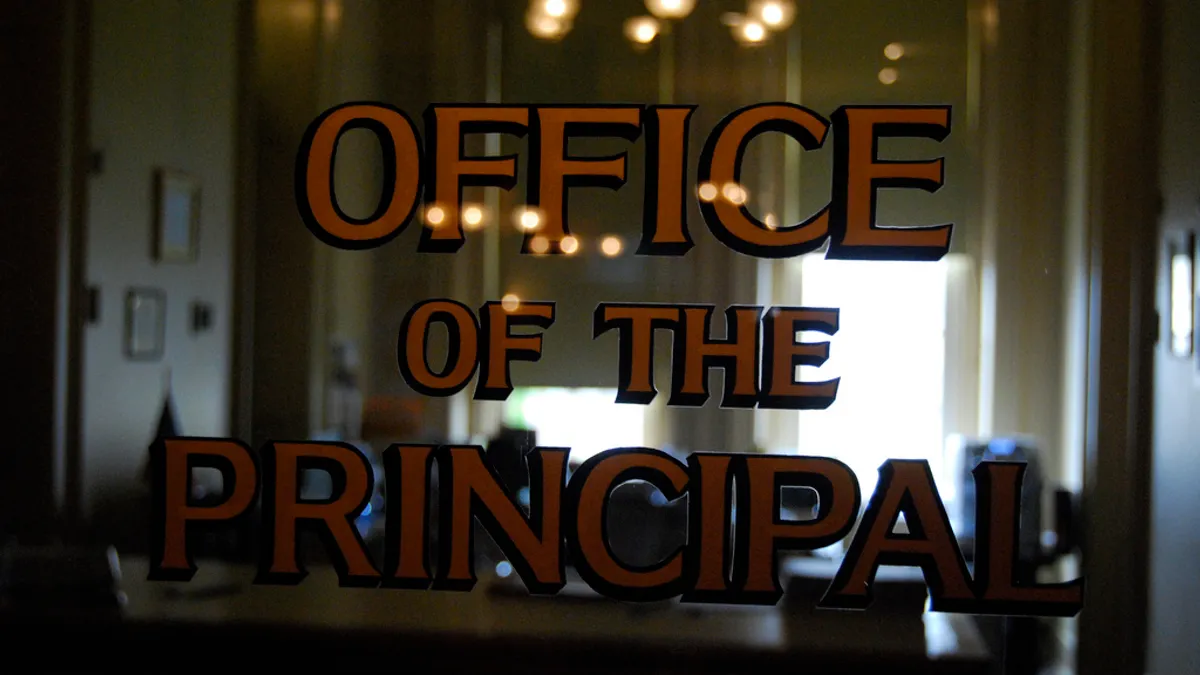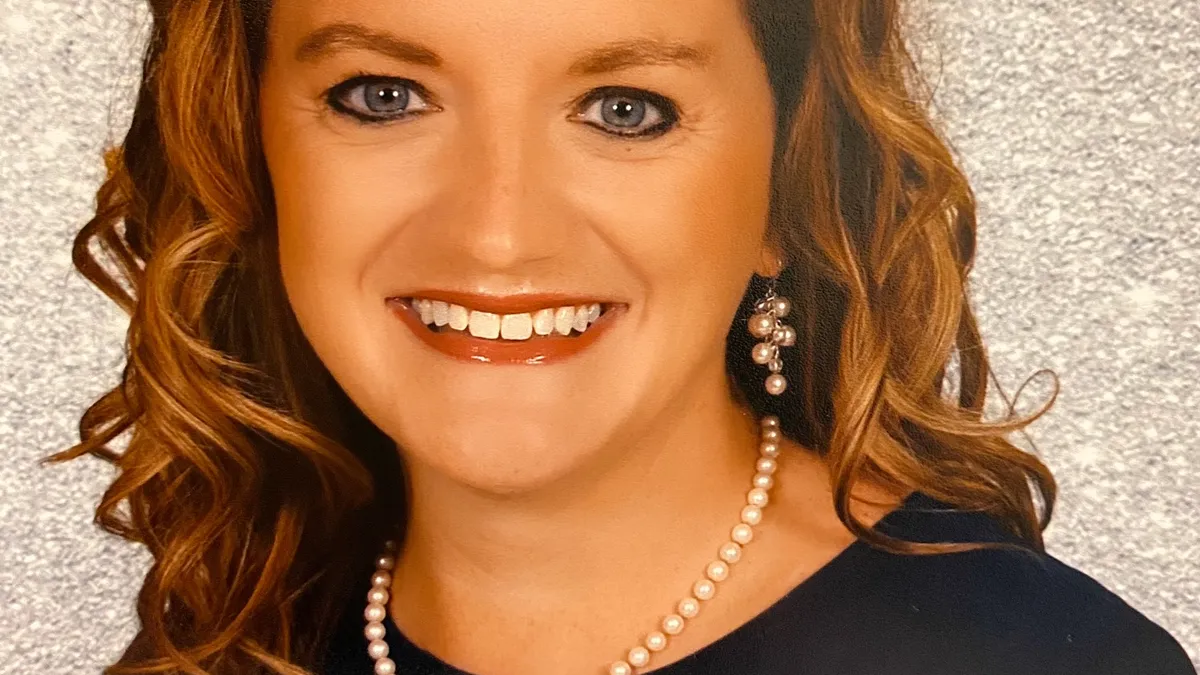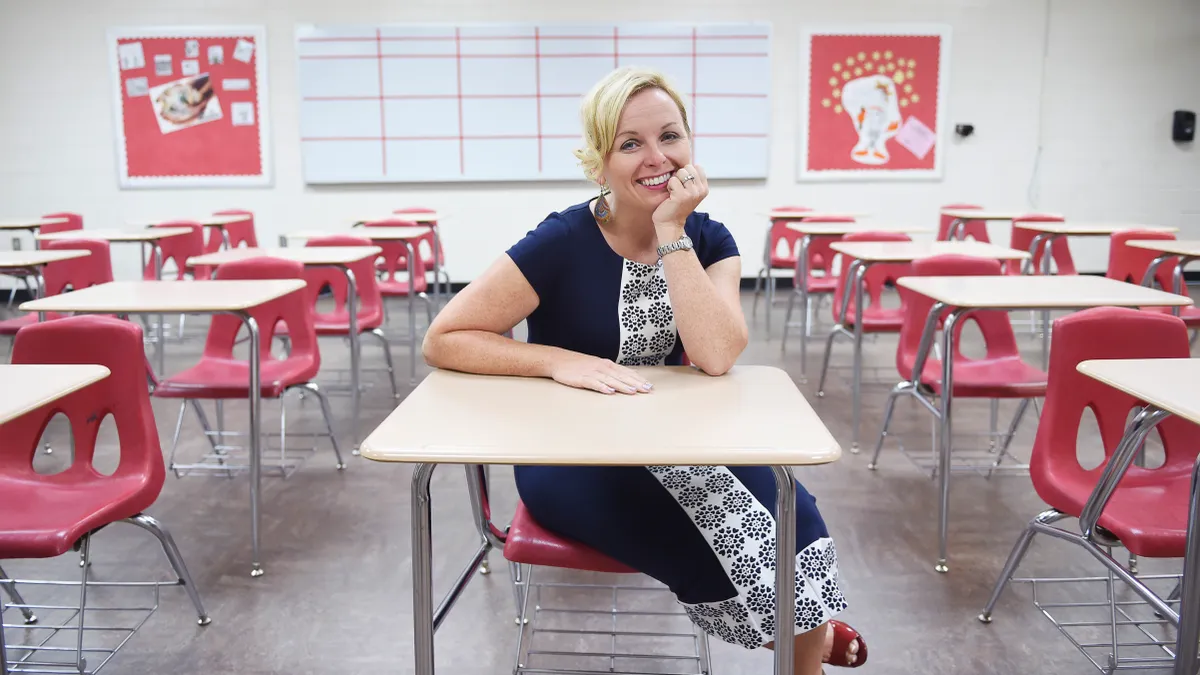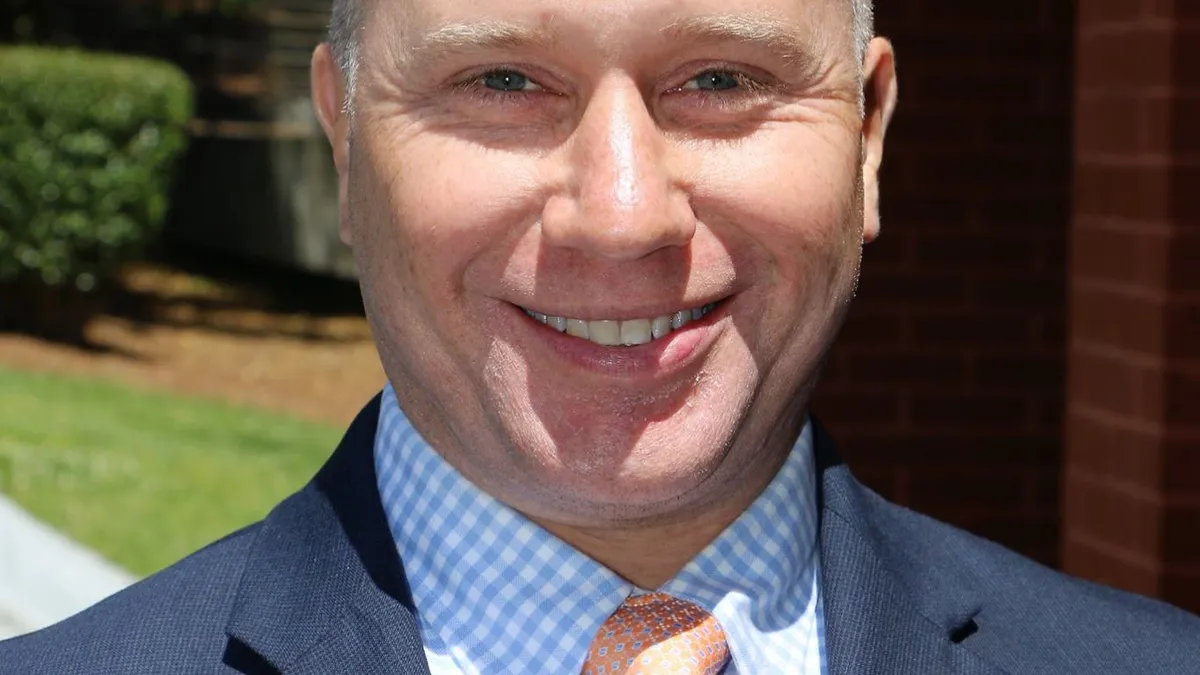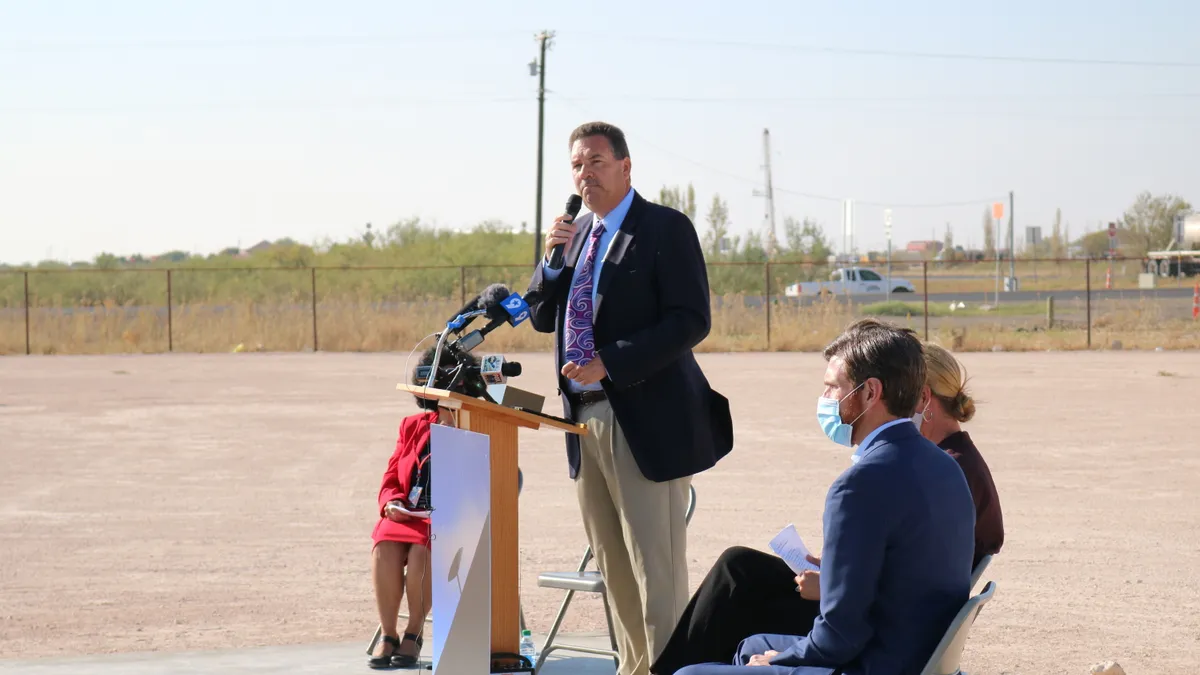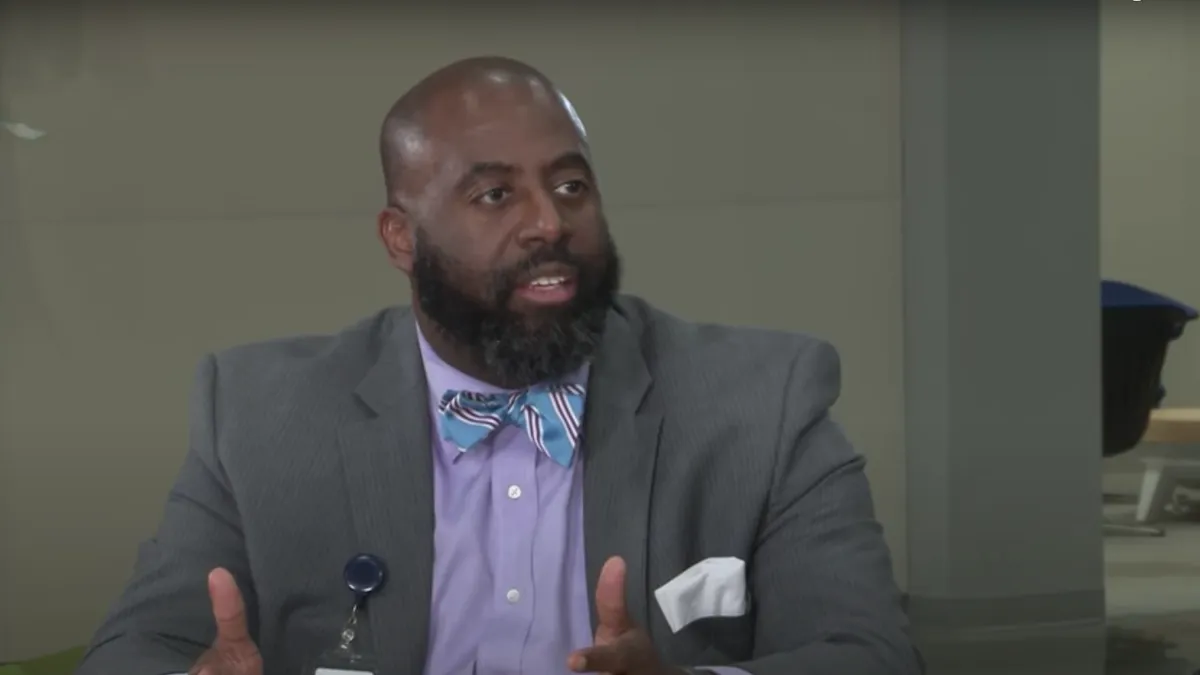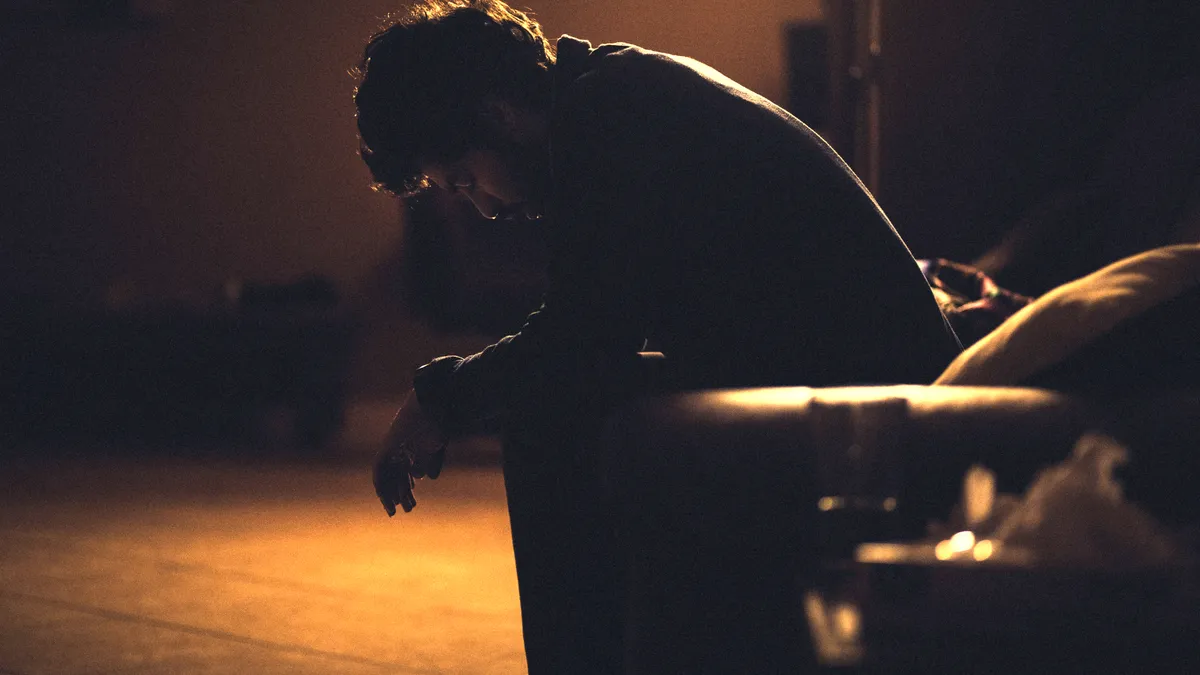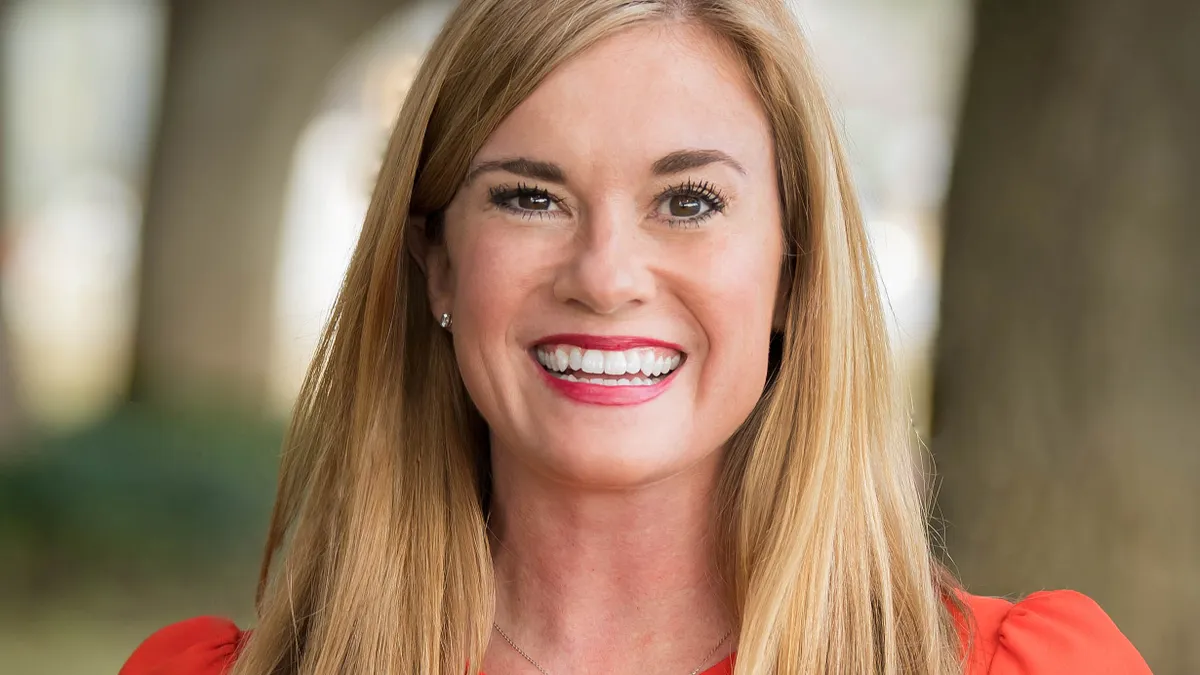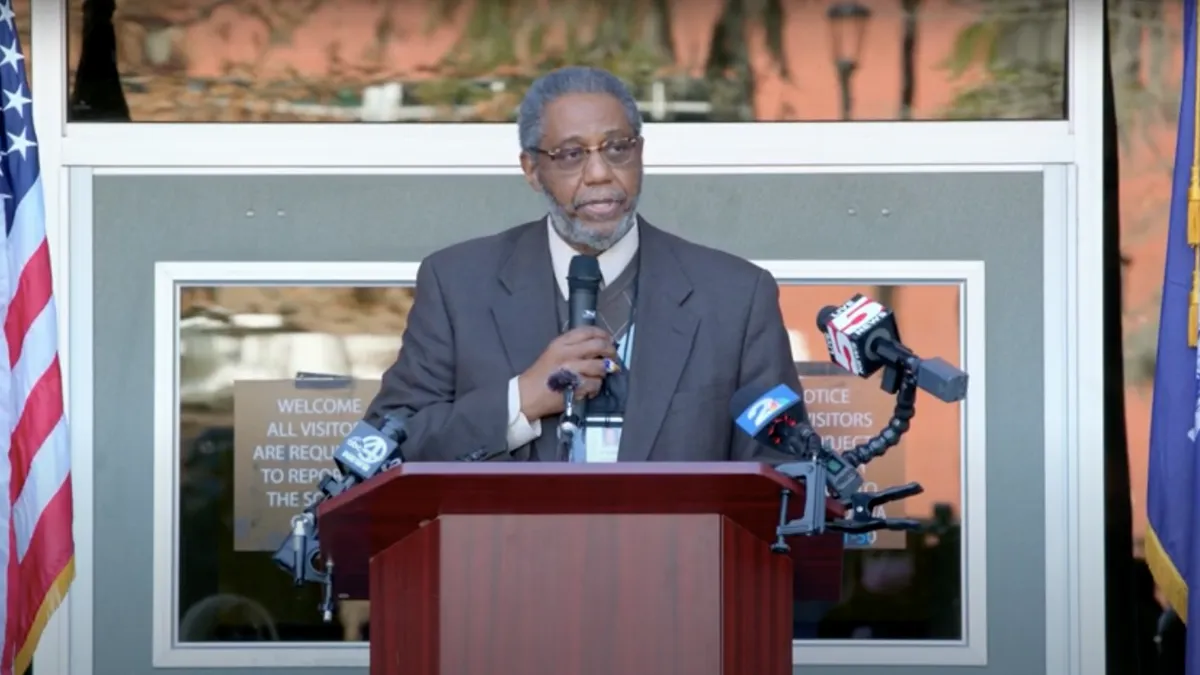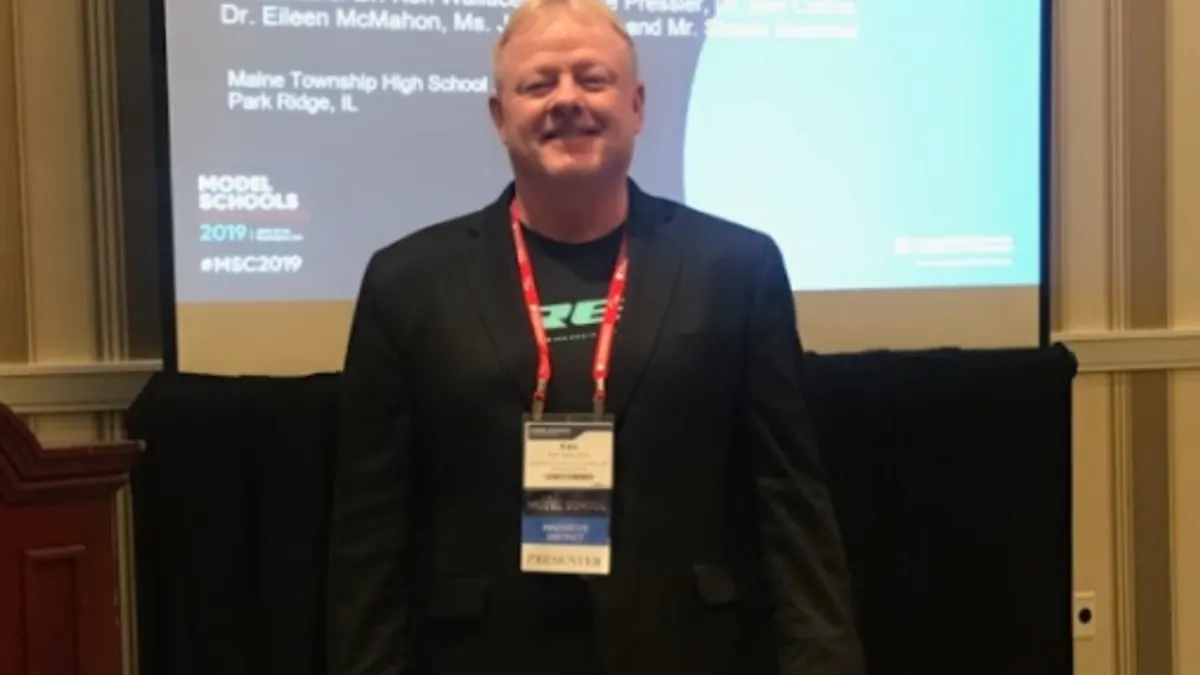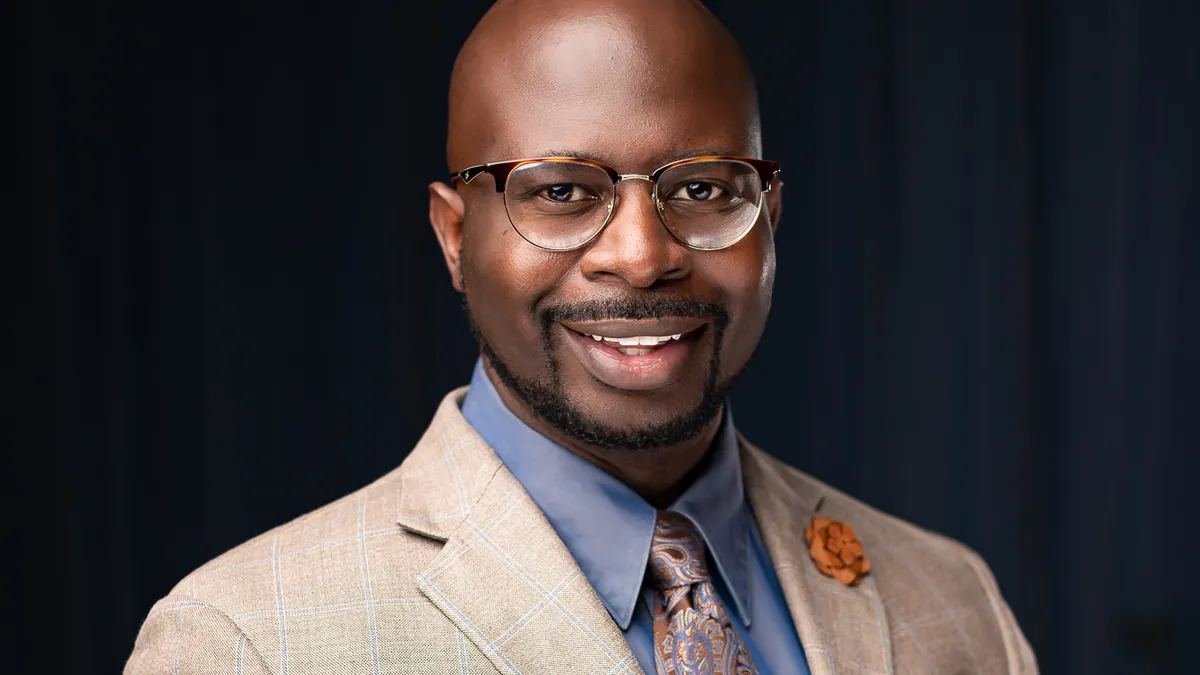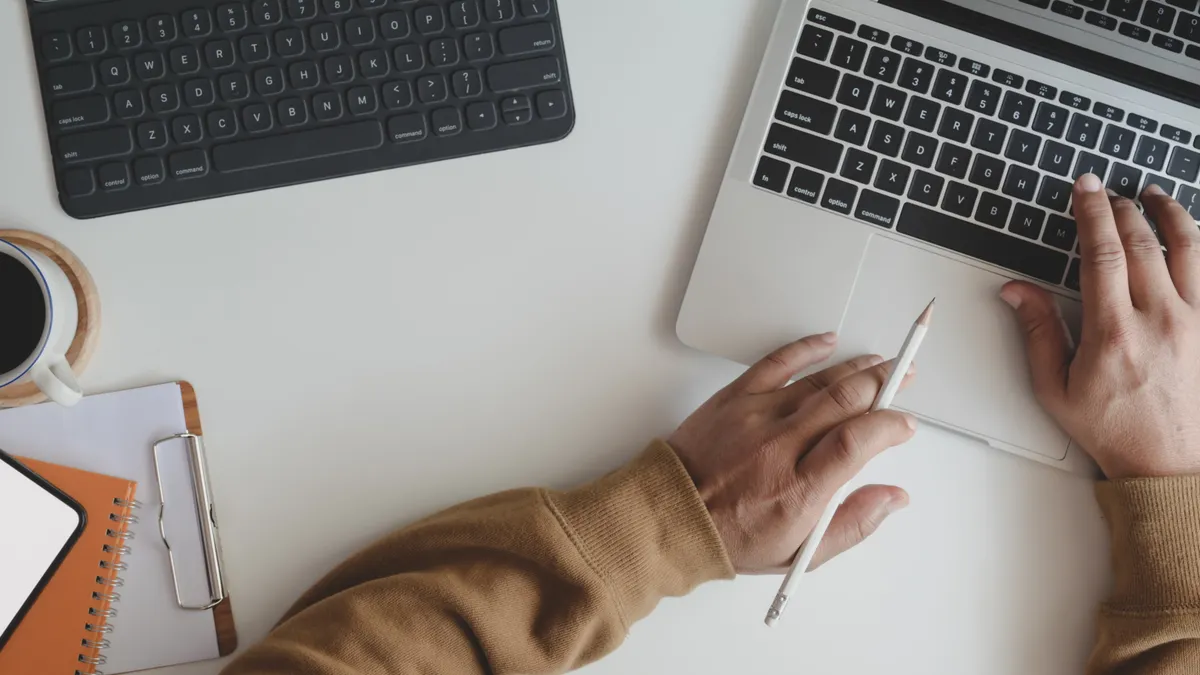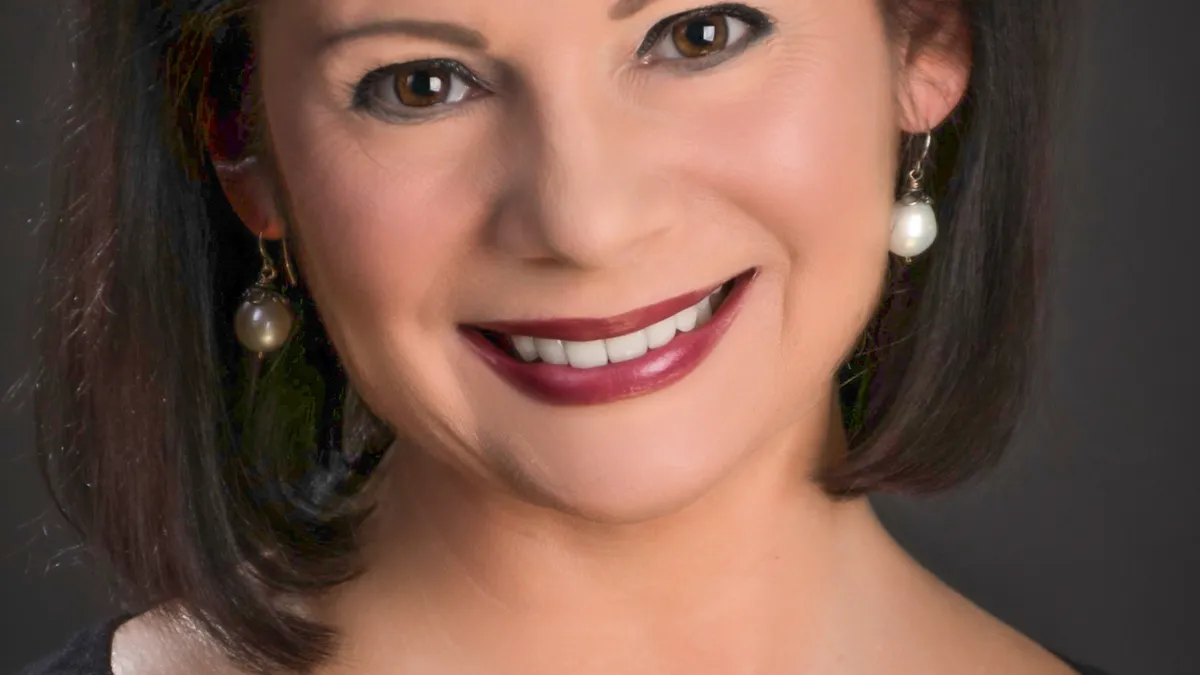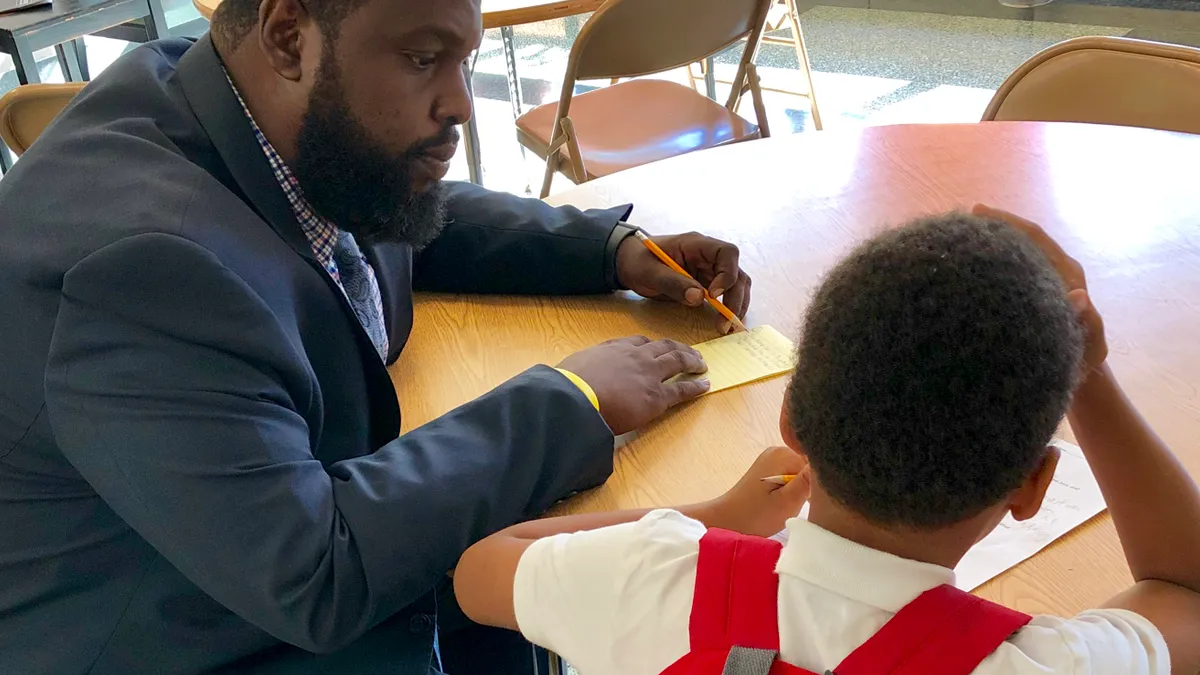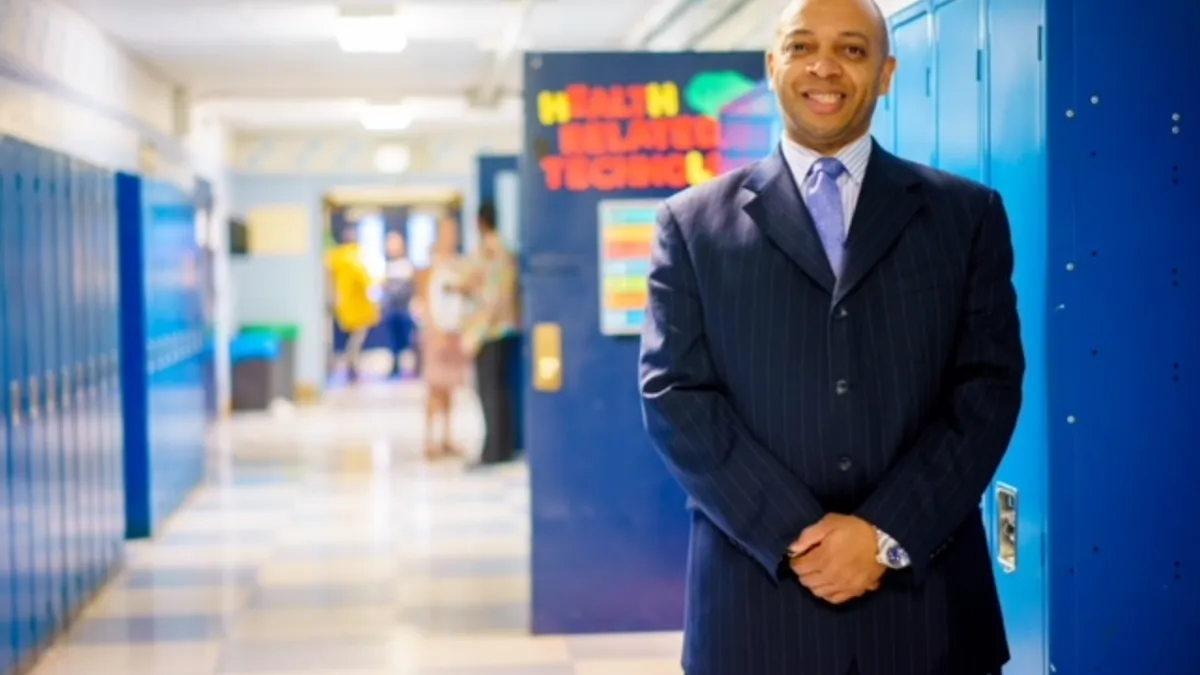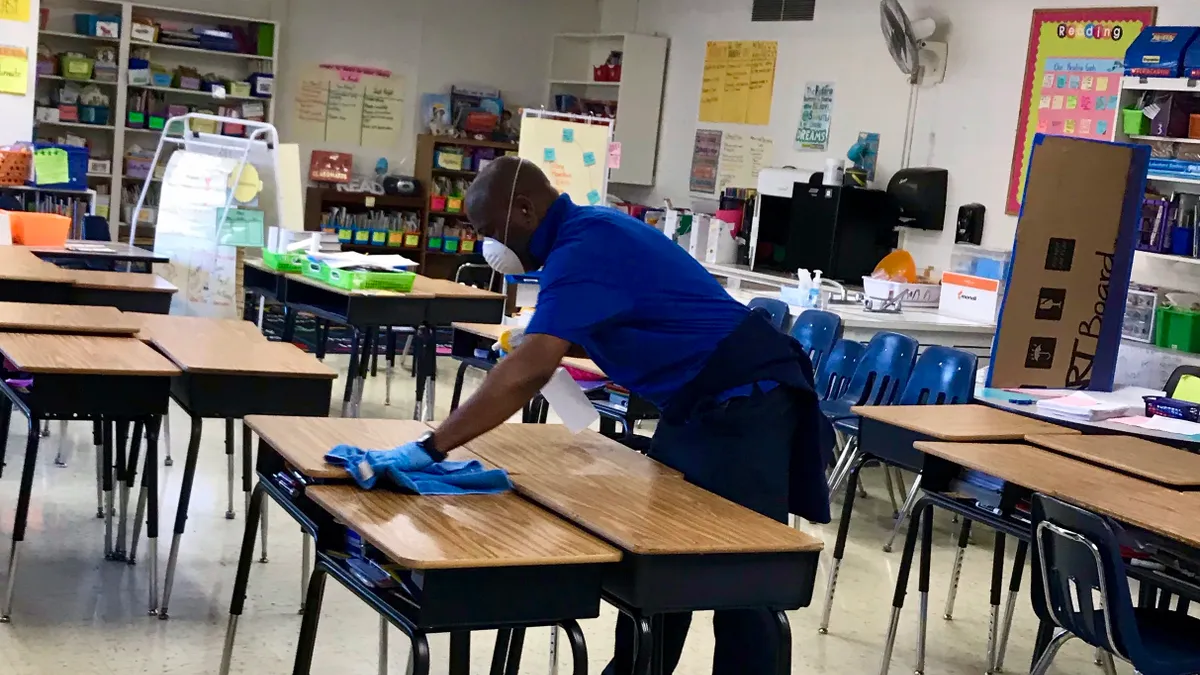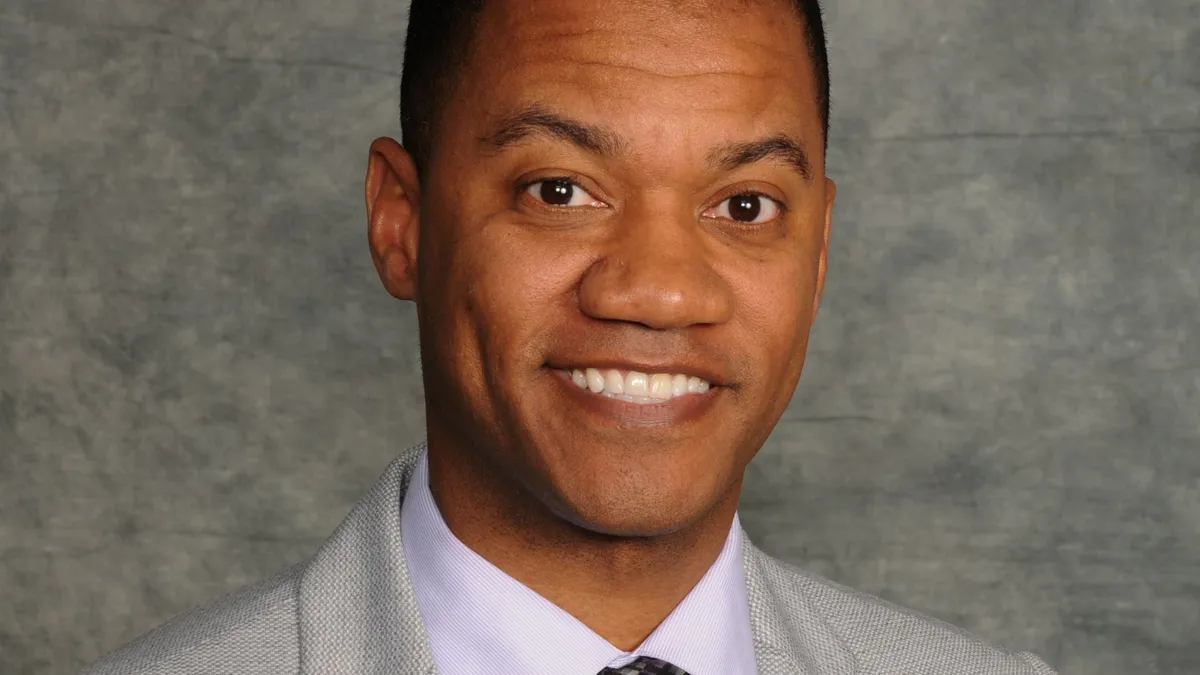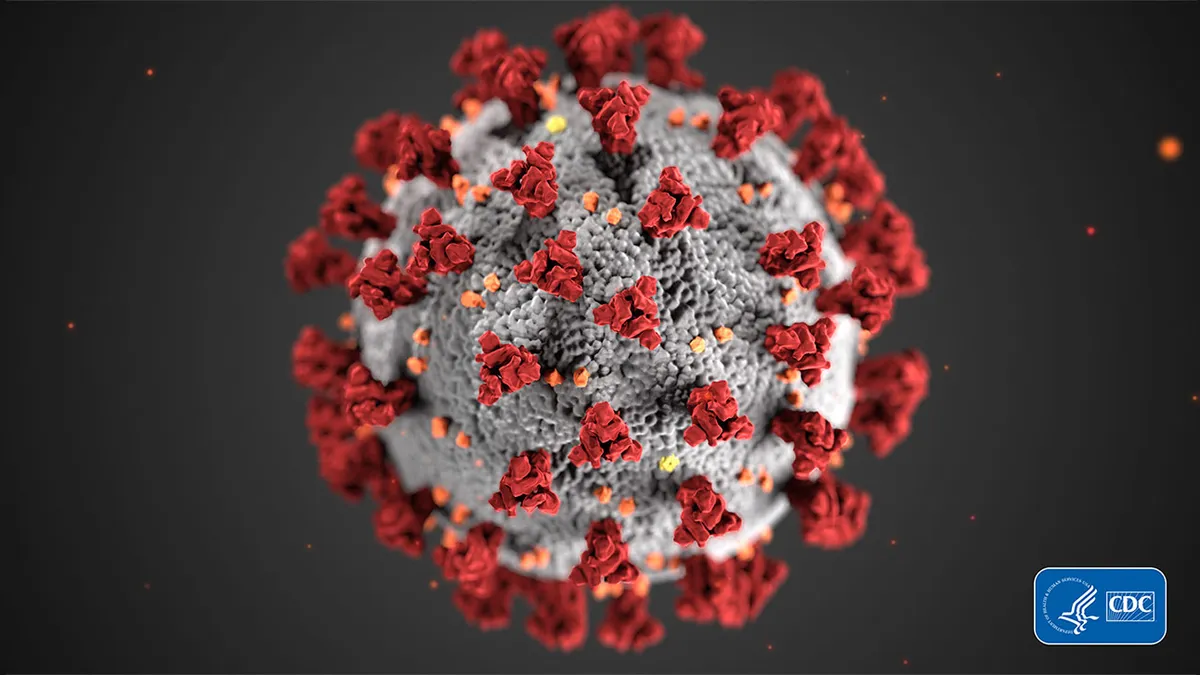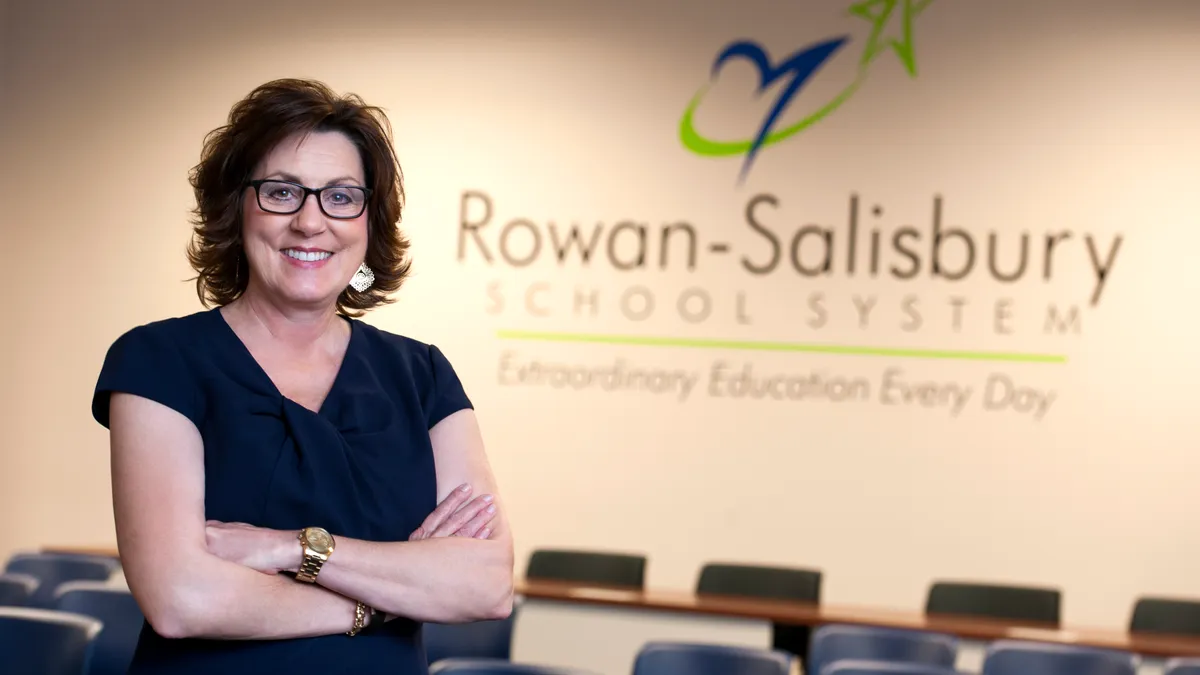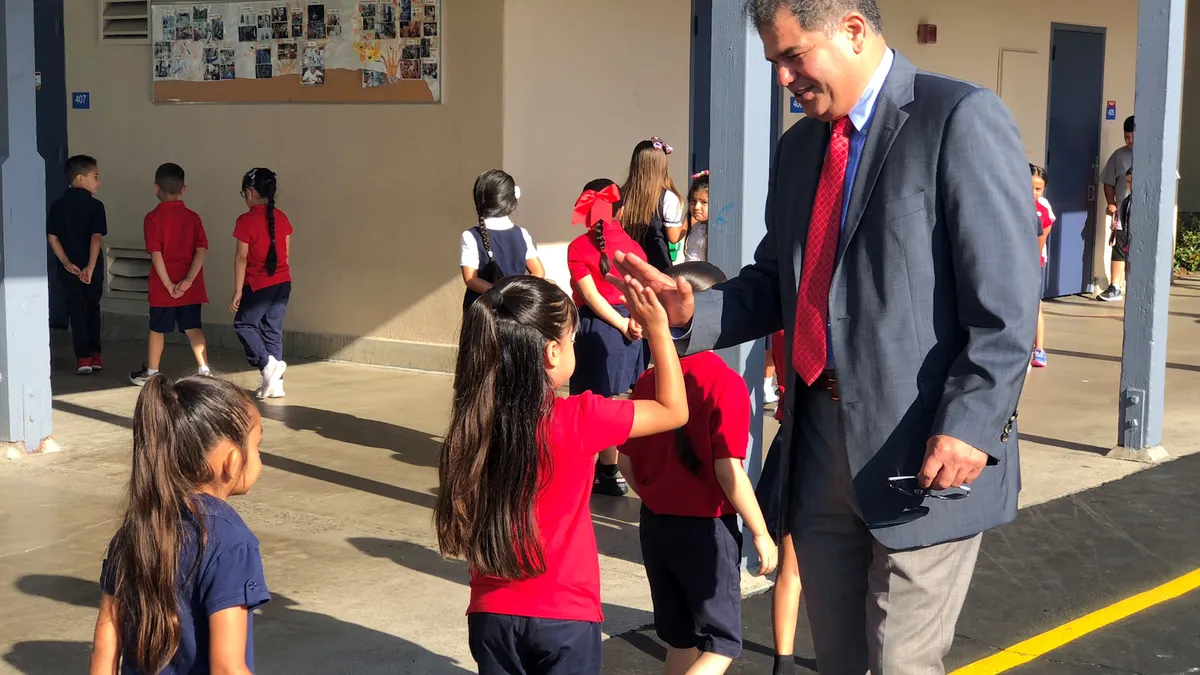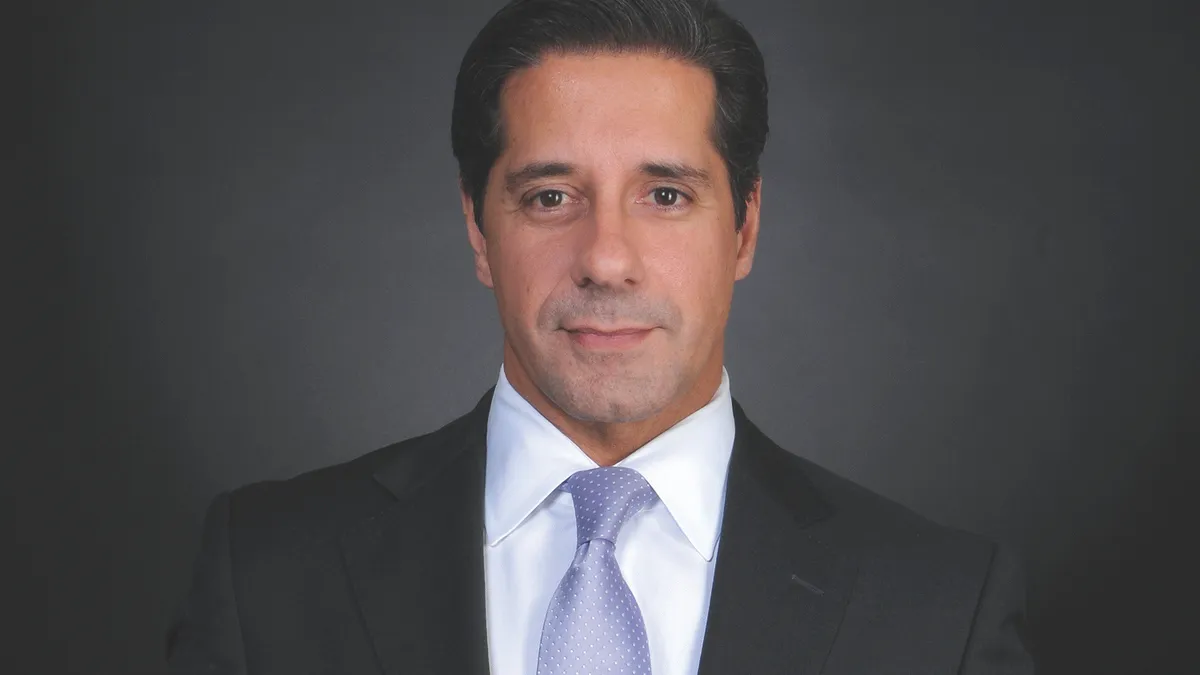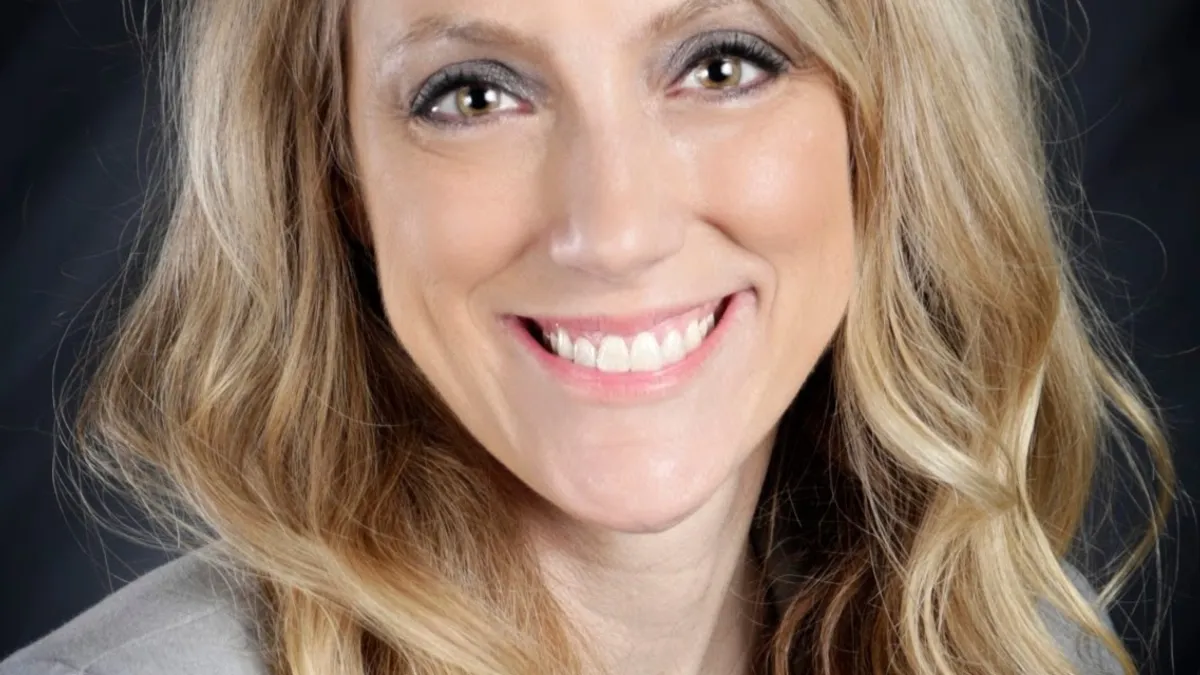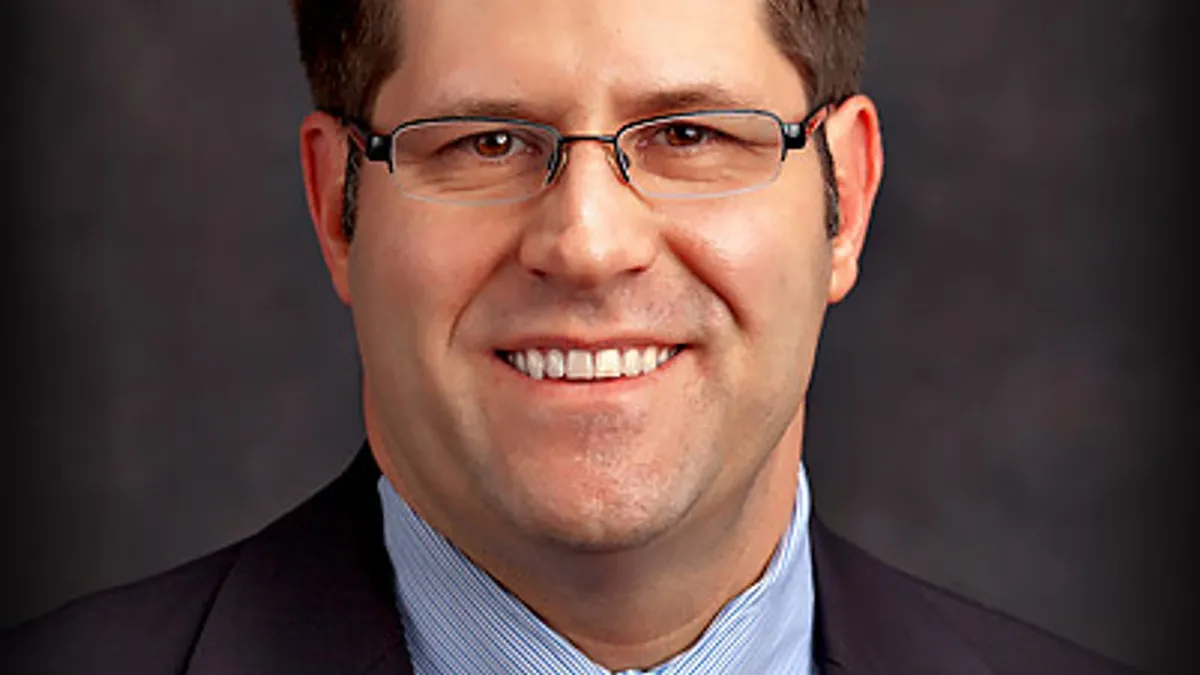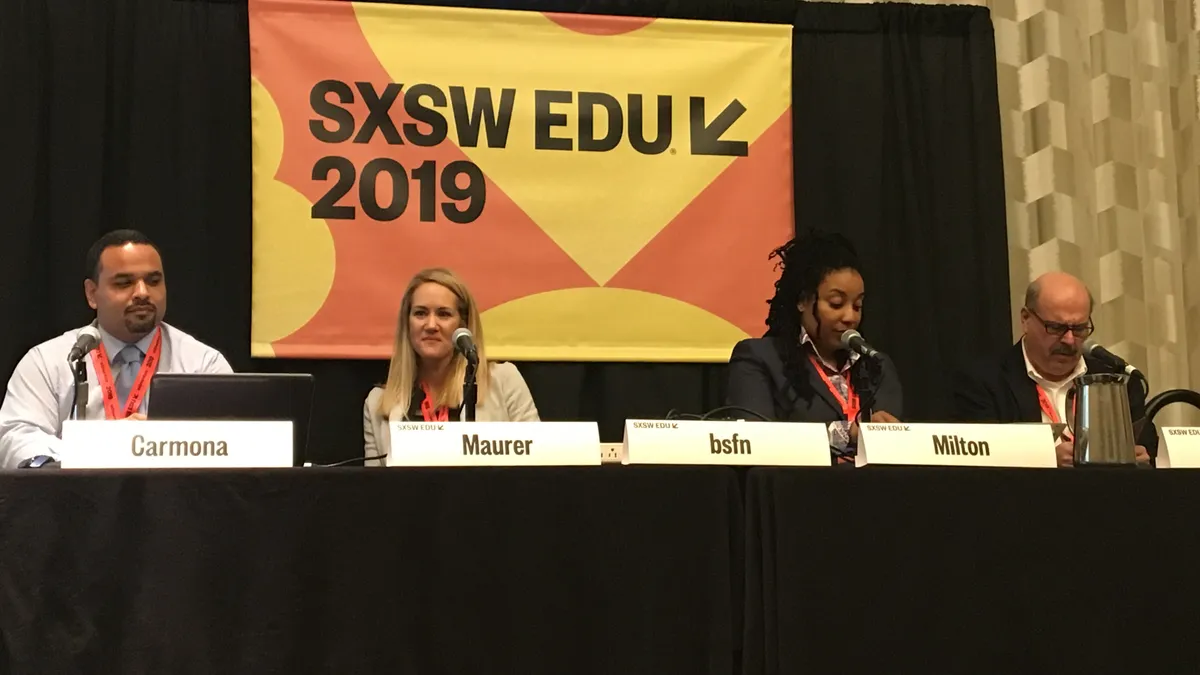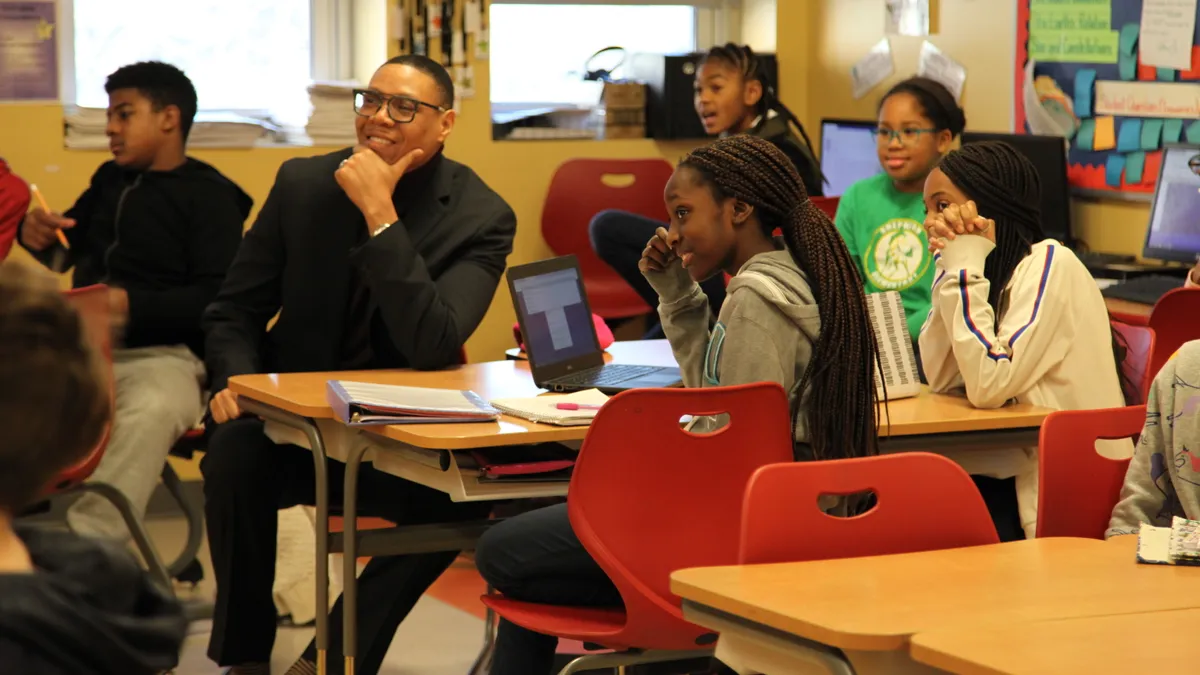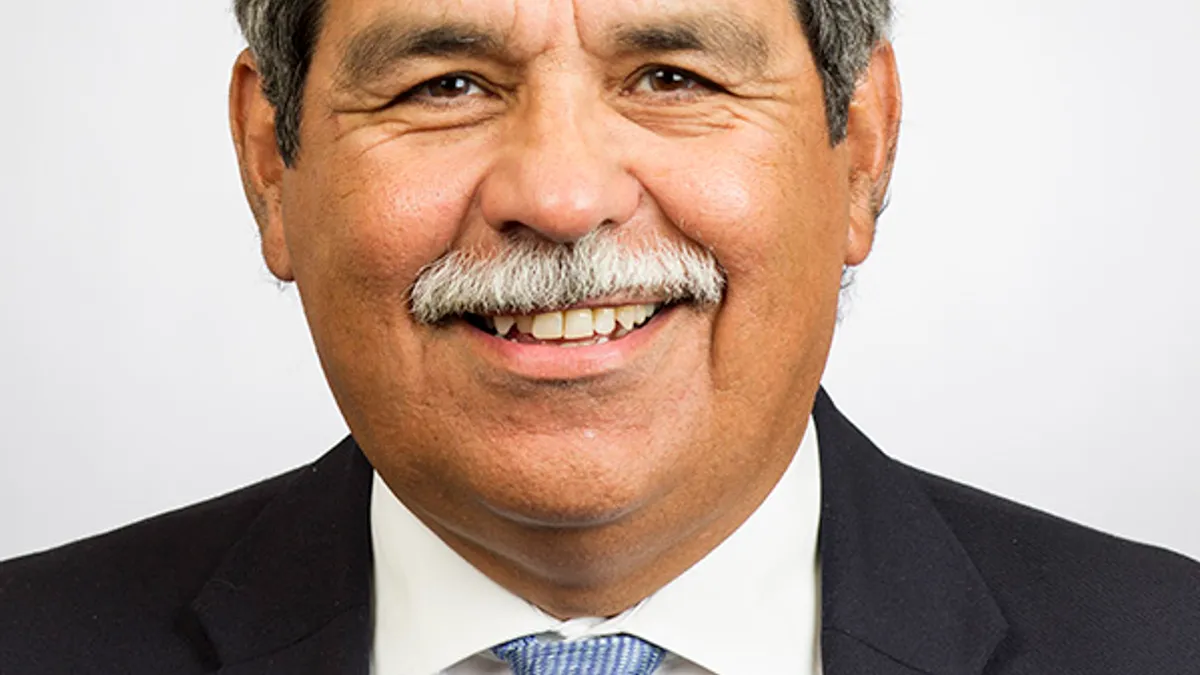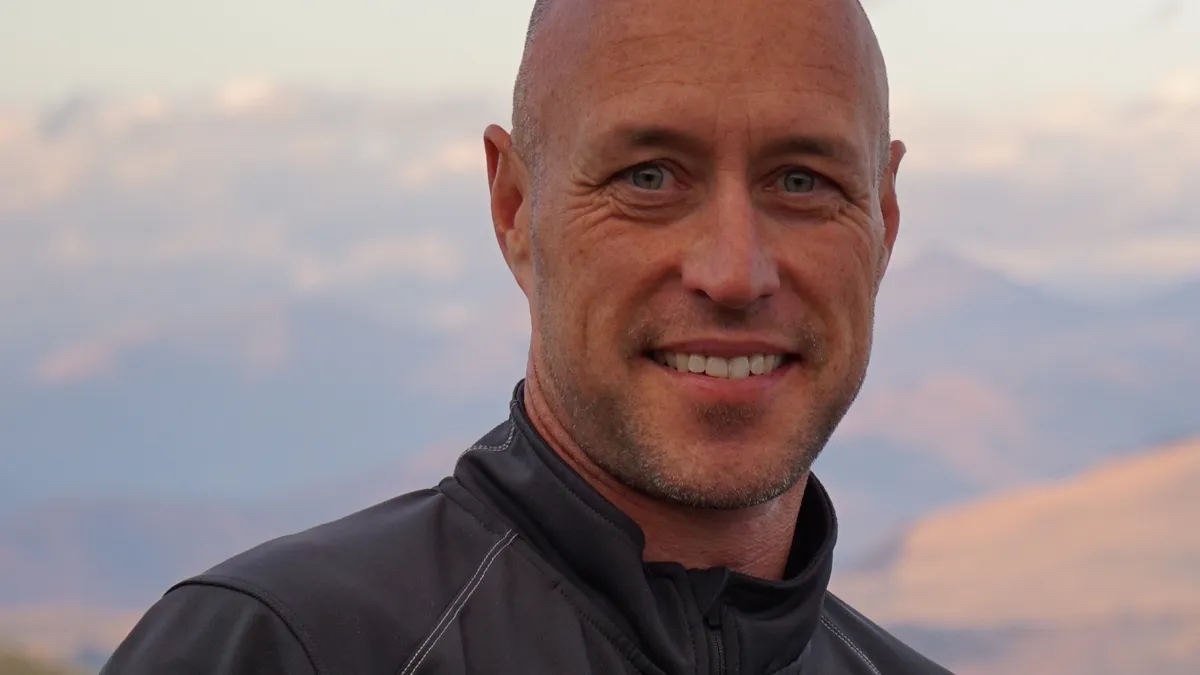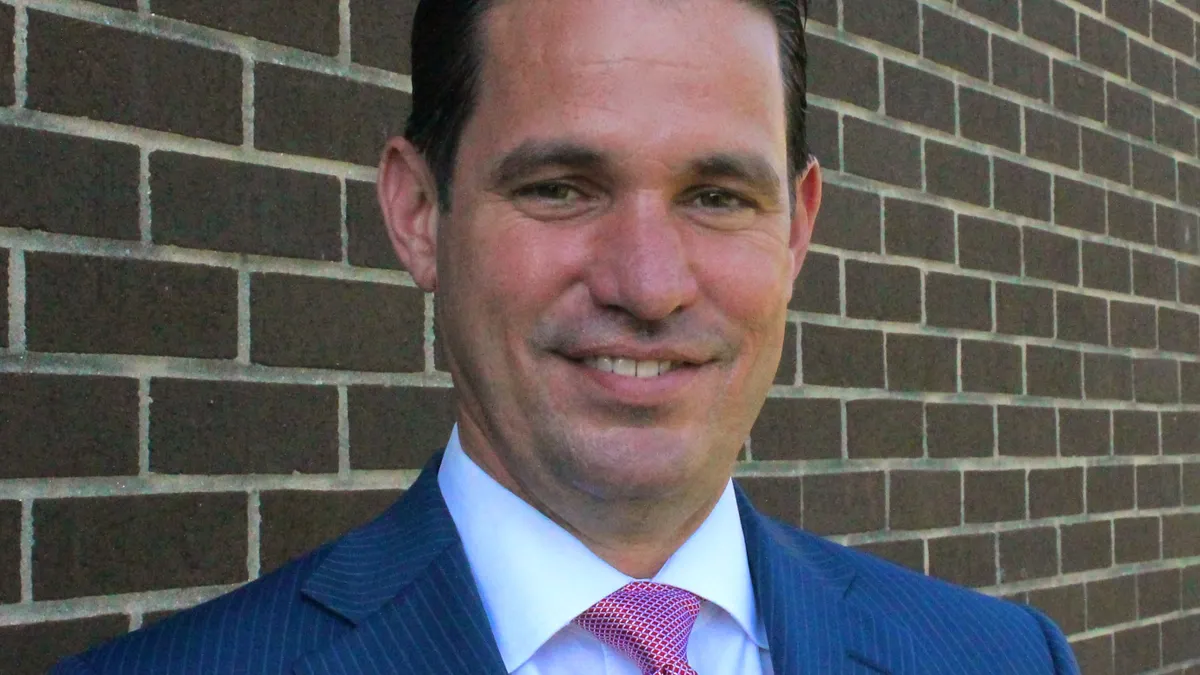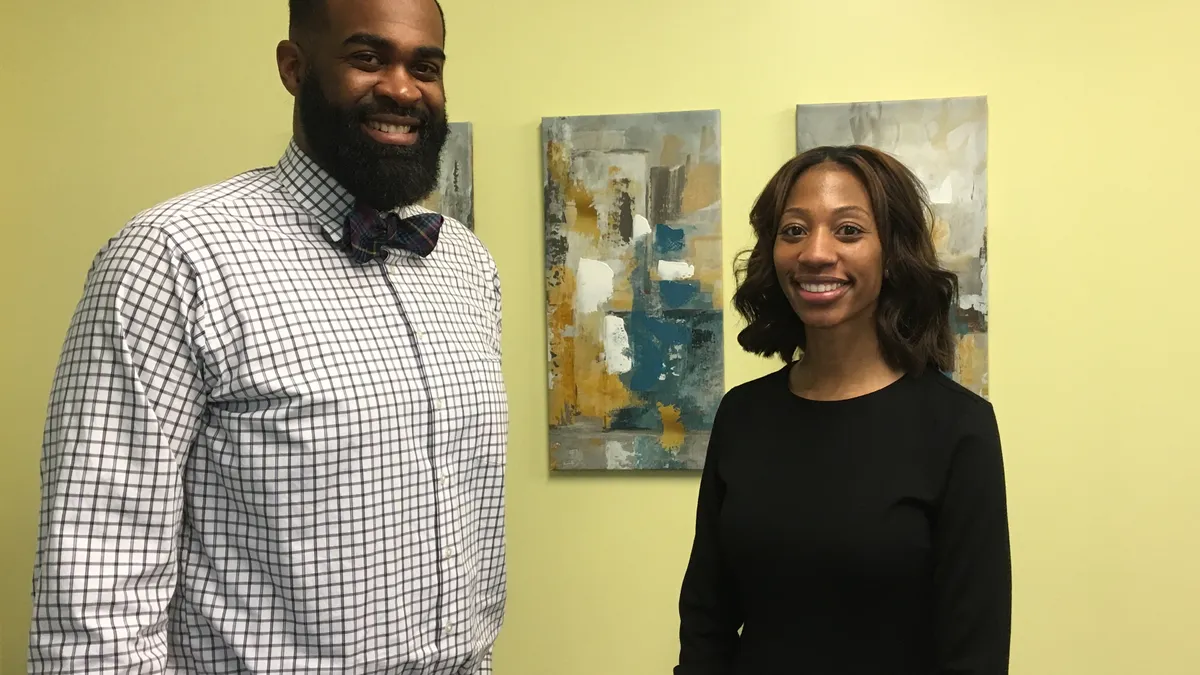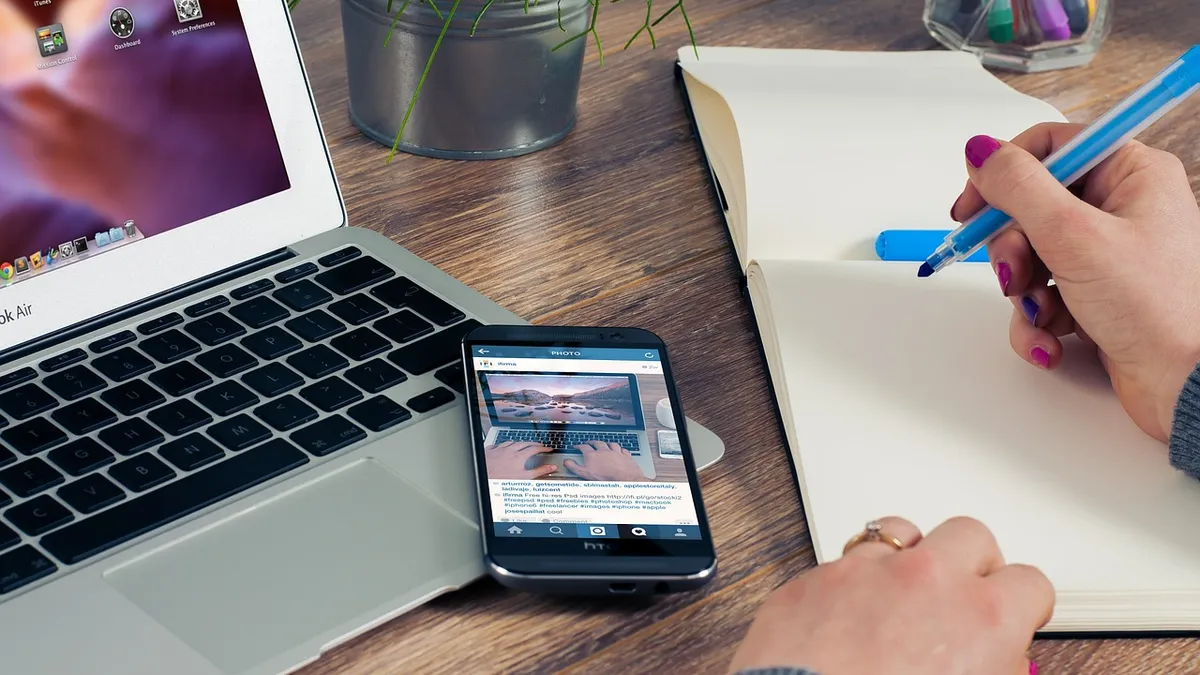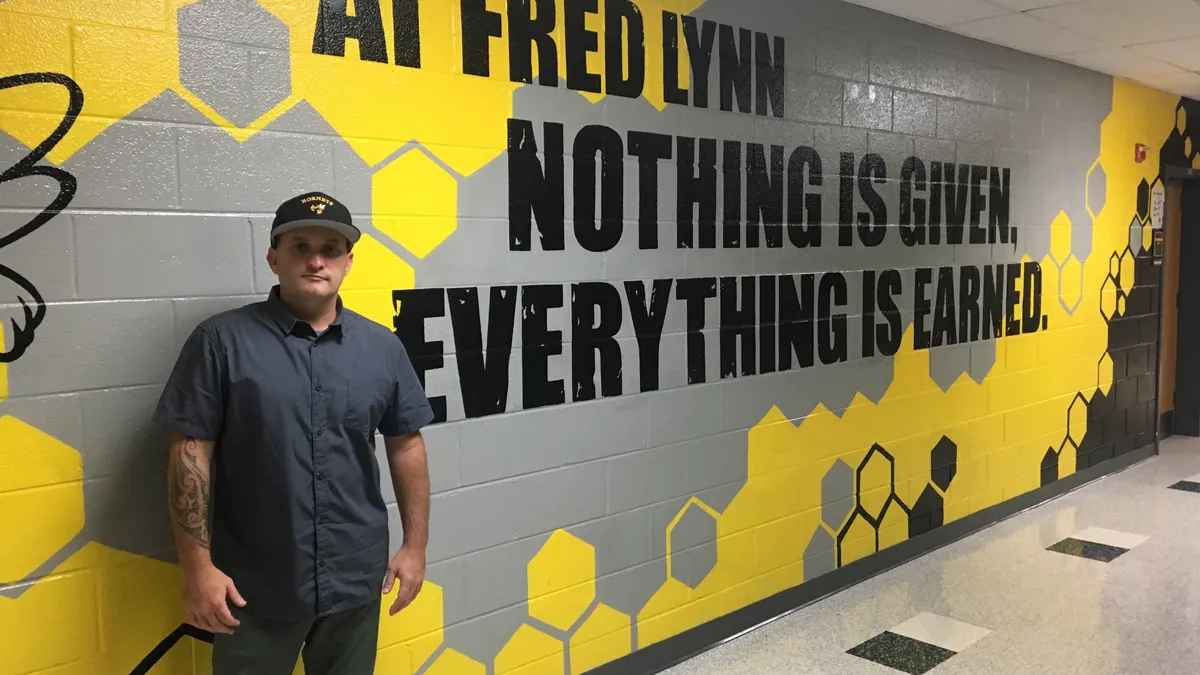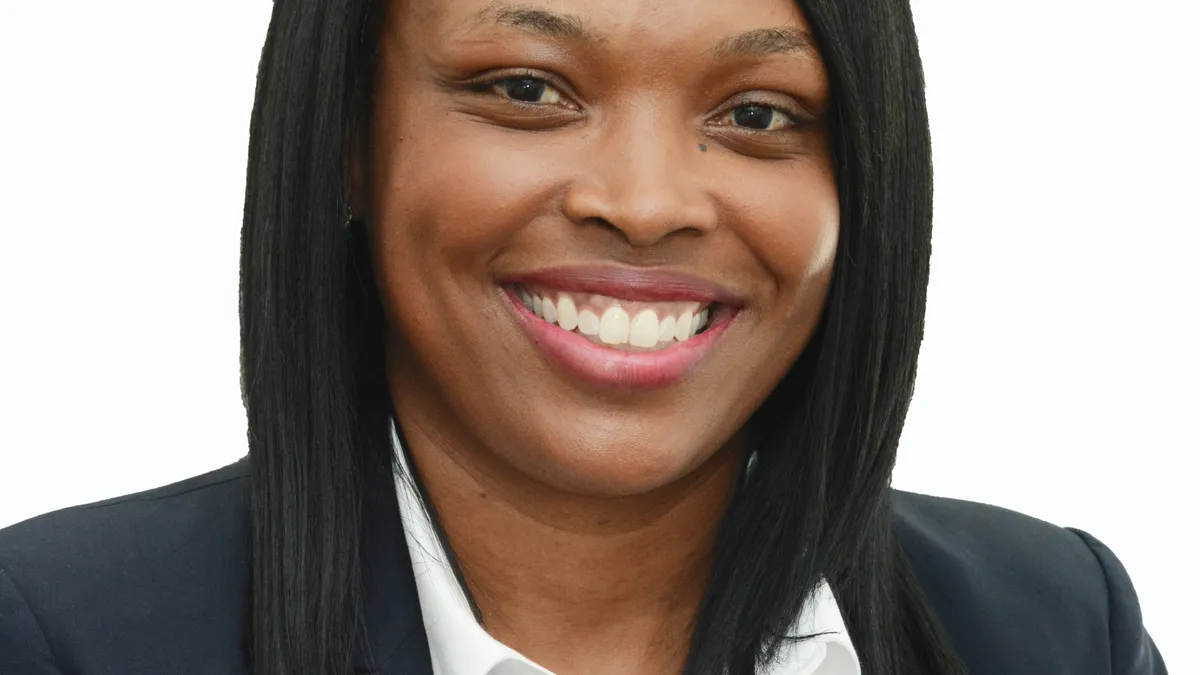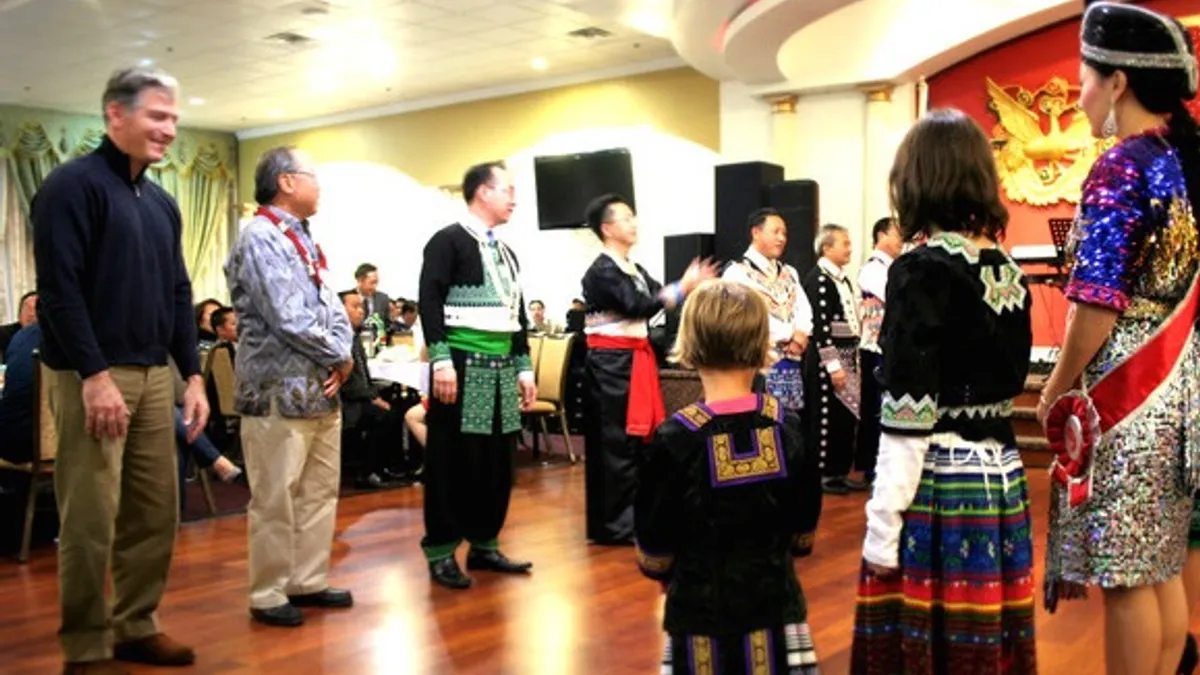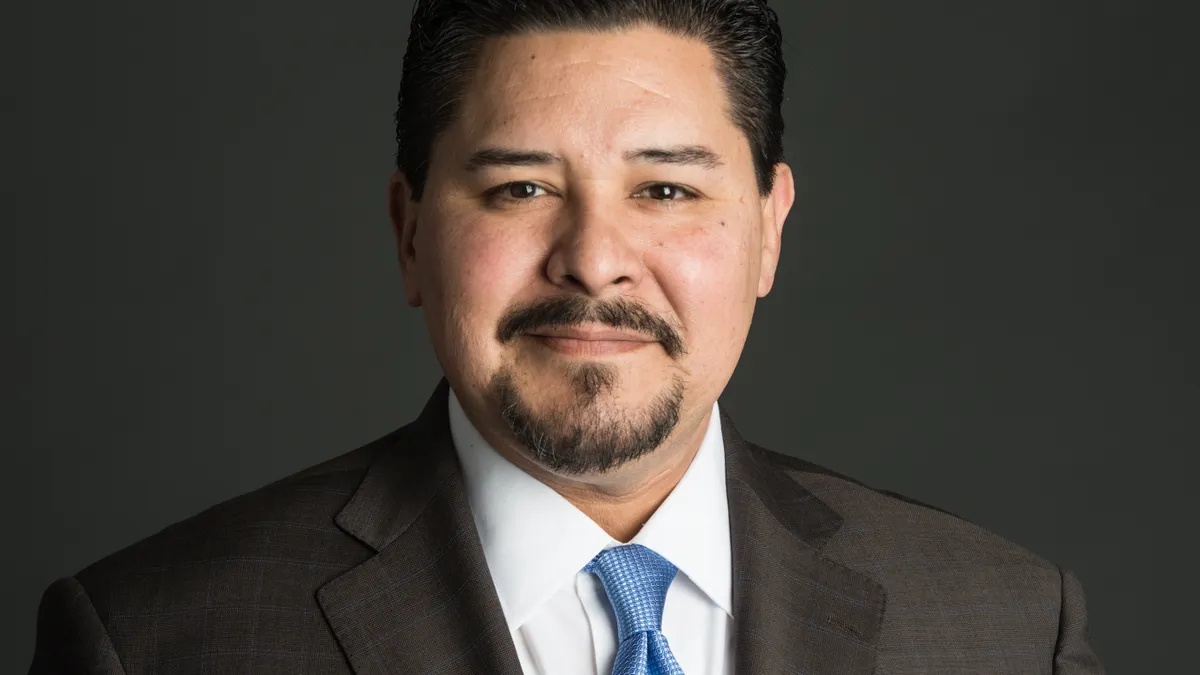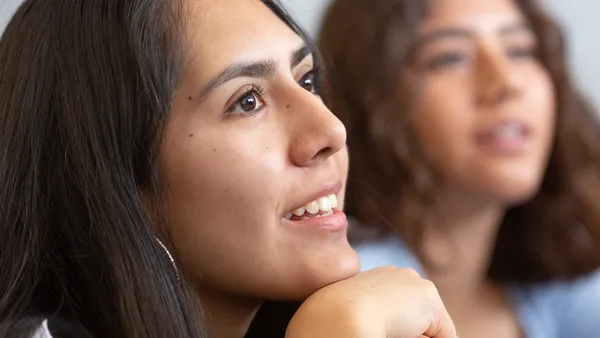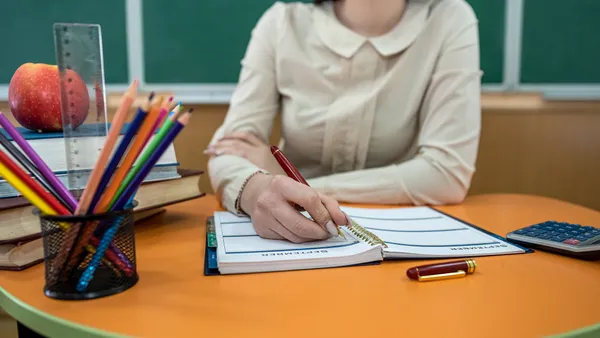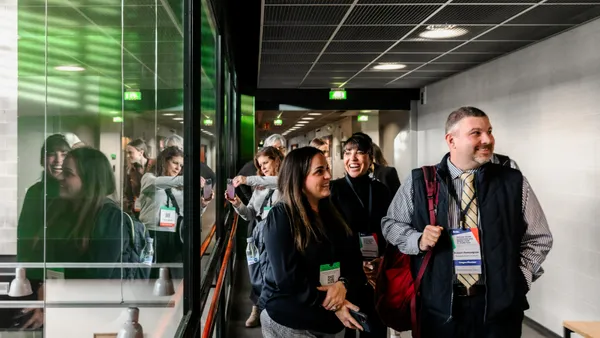Lessons In Leadership is an ongoing series in which K-12 principals and superintendents share their best practices and challenges overcome. For more installments, click here.
Located in the Boston suburb of Newton, Massachusetts, Newton North High School serves over 2,000 students with a rich array of elective and career and technical programs. The school's principal, Henry Turner, is a rising force in educational leadership, promoting not only the growth of the school's rich legacy, but serving the roughly 20% of low-income students while navigating a focus on equity and anti-racism.
This year, like most other leaders, he's also been challenged to do so amid a pandemic that forced schools to go remote and a national reckoning over systemic racism that led them to confront educational equity.
"At this point we, we view it as there's two crises going on," Turner told Education Dive recently. "There’s COVID, and then there's systemic racism and the civil rights movement that's emerging and how we're responding to it as a school. We really do take it from both lenses."
Over the course of our conversation, he shared how he's helped students maintain equity in learning during pandemic disruptions, how to navigate racial and other issues as a school, and communicating incidents to the community.
EDUCATION DIVE: This has been a year unlike any other before it, due not just to the pandemic but to the national reckoning over systemic racism and other challenges. What are some of the pivots you’ve had to make in your school, and how did you ensure you continued helping kids maintain connections to learning?
HENRY TURNER: In March, when we were shut down, our focus was, “How do we make sure we're able to connect with all of our students?” And taking a thoughtful and slow approach to make sure with low-income students, or students who have a variety of different family language backgrounds, we were able to connect with them and were able to support them.
So I call the distance learning crisis “phase one,” which is for the first few weeks. And then “phase two” was sort of like starting to ramp it up in a way where we were learning about how to do remote learning while at the same time not leaving any of our students behind. So we did take a slower approach.
We ended the year where we still had really good engagement with students and a sense of trust we're making decisions in their best interest. The way we've been looking at this is, “How do we keep growing as a school based on what our core values are and what our plan has been over the last few years to grow? How can we use this as a leverage to keep growing?”
One of the ways I thought last year was successful was we got rid of our final exams and we had students do some summative reflections. And we offered a variety of ways of doing it. We had gone to pass/fail, so this was really optional for students in a lot of ways. And we had an extraordinary number of students do it, even though they knew it wasn't for a grade. The reflections were amazing and a great demonstration of their learning. That sort of thinking was the launching pad for now, where we're in “phase three,” which is “How do we make sure we're prioritizing learning, and in a way that's through an anti-racist lens?” And making sure, again, we're growing as a school that has been focused on engagement and moving forward in terms of critical thinking.
[We want to] have students develop more modern skills for employment, and also doing it from a social justice, anti-racist lens. This summer, I saw more professional development from our teachers than I've ever seen before on their own, in addition to the things we offered.
We saw this grassroots movement of teachers in our building who started forming committees on what does it mean to be an anti-racist school, and how do we reflect on systemic racism in our school, and how do we then start to dismantle it? What came out of the summer was not only work focused on remote learning, but also doing it from a perspective of equity and anti-racism — all of which was great thinking.
What’s motivating you most this school year?
TURNER: What I'm excited about this year is we are fully remote — I think that's a challenge. It's going as well as it possibly could be, but we've adjusted our grading policy this year. That conversation was from serious equity conversations, and our schedule was also developed from a serious equity perspective. The fact we're using that lens has helped us to really blossom, and also our teachers are relying on each other more than they ever have before.
We're much more collaborative. I'd say in the last few months, we've advanced like 10 years in terms of the type of collaboration we're doing — just even cross-curricular — which is really exciting.
With distance learning, what steps did you take to ensure access to education remained equitable for all students across the board?
TURNER: It’s work we started in the spring — working with our district tech department, working with families that did not have accessibility. We were in the middle or towards the end of [rolling out] a 1:1 program. At that point, we had had three-quarters of our students with laptops already.
We were fortunate in that way. Nearly every student had a device before COVID happened. I'd say now we're fully 1:1. Where we are working as a school now is like the cultural norms of the technology. For example, what happens when students are feeling maybe ashamed of what’s behind them on the screen? We are a large, wealthy district, but we also have 20% of our students identified as low-income.
So what are ways to help and support students in that way? And what happens is students don't want to have their video on. Some of that is cultural conversations we're having so we're not shaming students or pushing them away, but actually bringing them in and fostering trust with them, which has been another way we're seeing more engagement from students.
I feel really good we're kind of at that point and not just talking about how do we make sure the kids are connected. Because now it's like, “How do we keep moving, how do we keep connecting with them from a social-emotional perspective?”
I've heard you speak previously about racial incidents at your school on the Connect Safely podcast. When it comes to those sort of incidents and addressing them with the student body, how do you also communicate with the community about it?
TURNER: One is we're very transparent when these incidents occur, and that practice goes all the way back to my previous principalship, where we had some antisemitic hate crimes and the practice was to kind of keep it in-house. I was adamant that we're public about it. We started to build a lot of trust with our most vulnerable populations when we did that.
We've done the same approach here in Newton. That has largely gotten a lot of community support to rally around students and our school. We also have an organization called Families Organizing for Racial Justice. It's a district organization of parents and families. We use them in the same way we use our PTSO [Parent-Teacher-Student Organization] as a support mechanism for our students.
We also are blessed one of the ways in which we're trying to make sure students are engaged is leaning into and supporting student activism. We have been very supportive of student protests and demonstrations led particularly by our students of color groups. That's fostered trust with those students and also has just helped us think about what are the skills around anti-racism we want all students to develop.
We’re having a lot more conversations with our students about what are the things they need if and when these kinds of incidents occur, and how do we empower them to feel like their voice can be heard in their school.
When it comes to also addressing the trauma students and staff could experience — not just from seeing these incidents, but also those during protests and the stories about Ahmaud Arbery and Breonna Taylor and George Floyd in the news — how do you support them?
TURNER: That's a huge question, and a good question. This is where we are committing as a faculty on what does it mean to be an anti-racist school. One of the things our students gave us feedback on was when these incidents occur, there were times when they may go through a day where none of their teachers were talking about it, and then their interpretation was, “Well, the school just doesn't care.” And then there were students where every teacher talked about it, and they were just exhausted.
So there's two parts: One is how do we make sure all adults know not only do we need to talk about it, but students need to know we're just as angry about it. I mean, as a person of color who's been a victim of racism, that was a lesson to me — that specifically when the racial incidents in our school happened, I needed to be vocal about it. And not only that, I need to be angered about it. That modeling helps our teachers to see they also needed to demonstrate that anger for our students to know.
The other point, though, is we need to create structure so it's not overwhelming to students. This year in our new schedule, we've created what we're calling community blocks, which is sort of like an advisory so we can foster these kinds of conversations with students in a more structured way without relying on students maybe never having a conversation in their class or having that conversation every single block.
For administrators in buildings where, when it comes to both the current civil rights issues and issues related to the pandemic, they receive pushback from parents who might have certain viewpoints, what would your advice be on navigating that?
TURNER: We've had groups do public records requests on our history department a couple of years ago. It was a spotlight on Fox News because — it was incorrect, but — a group was labeling us as “antisemitic.” They were an anti-Palestine group. We are already seeing some of the building of some organized groups in our community who are coming to attack our schools for demonstrating that we're anti-racist, and they're citing their affiliation and support of Trump and other political organizations.
We have the mettle to be able to be resilient through that. We talk about, as a community, we can't shy away from it. This is the work. The reason we believe in anti-racism is because we know racism exists and we know our society is not one where 100% of people agree on that topic. That's what racism is.
We know we need to deal with the stress and strain that comes with it. We need to take care of ourselves. We need to rely on the strength of our community, but know we're gonna face that type of hate and criticism. It's different than what we see with outside groups. With our families, it's about educating them on what specifically we are doing.
In the situation we went through a couple of years ago, in public comment, we had alumni who were conservative students who came out publicly to say, “I'm a conservative person and my viewpoints were heard at Newton North.” We just need to keep educating parents that while we take strong positions on making sure our students have an array of information, we always use the line we teach students to think not what to think, and we also respect people in an environment where it's okay to disagree, as well.



